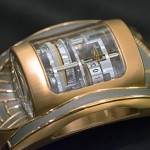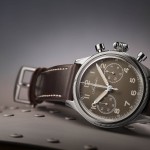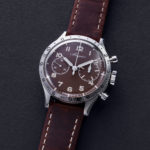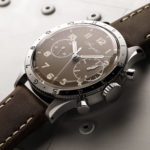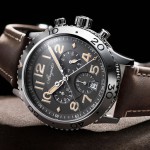Hands On: Breguet Type XX Chronographe 2057 and 2067
The latest generation of a storied aviator's timepiece.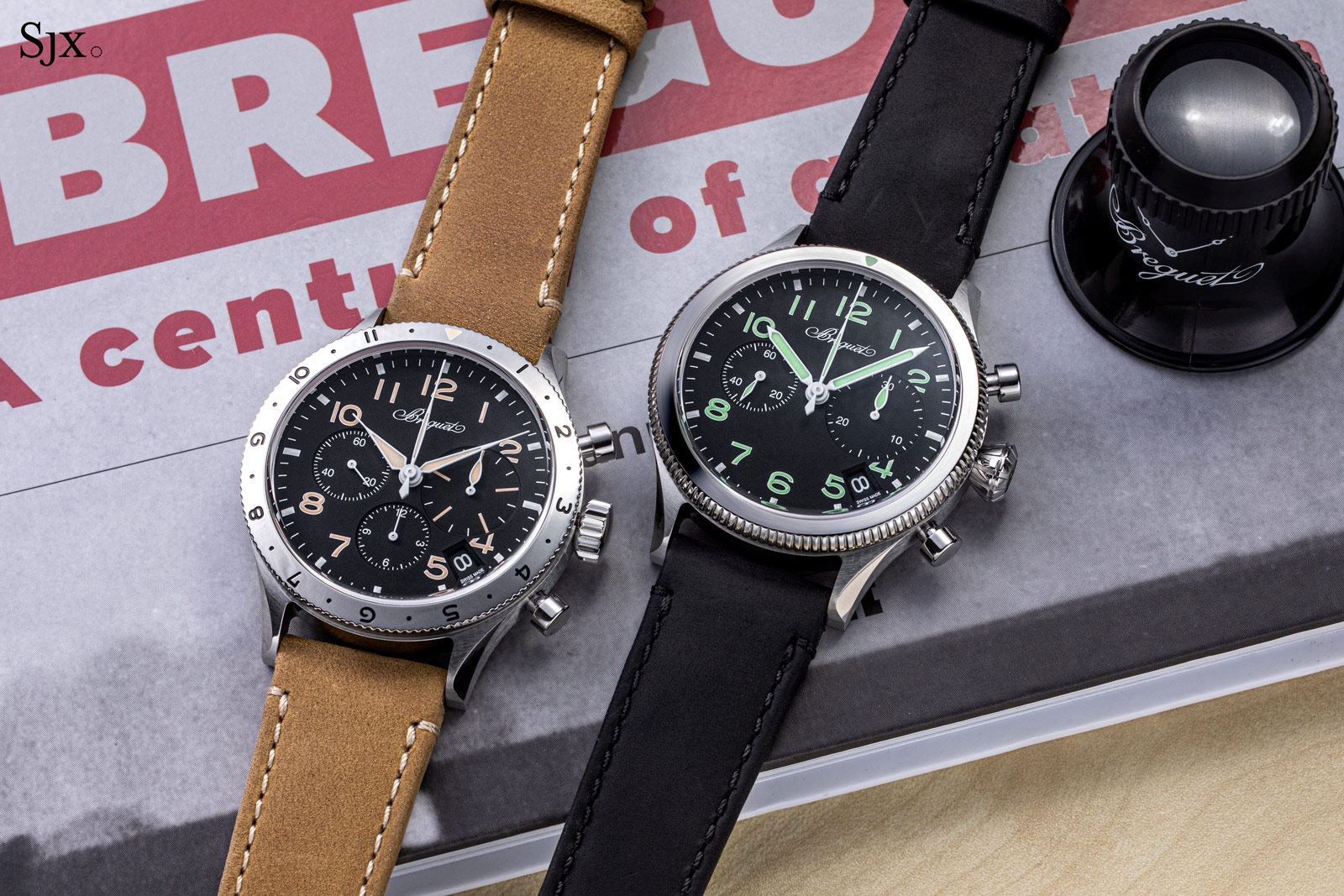
Following the launch of a revamped flagship perpetual calendar, Breguet now reboots its famous pilot’s chronograph with the Type XX Chronographe 2057 and 2067. Descended from the military-issue watches introduced in the 1950s, the new Type XX makes its debut with a pair of watches – one military inspired and the other civilian – that are identical on a fundamental level but distinctly different in look and feel.
Significant enhancements have been introduced with the latest-generation Type XX, including more sophisticated case finishing, but most notable is the newly-developed flyback chronograph movement with an extended power reserve and high-frequency, 5 Hz escapement.
(The new models are referred to as Type XX, as are vintage pilot’s chronographs sold to the civilian market. Vintage military-issue chronographs are known as Type 20, as is historical practice.)
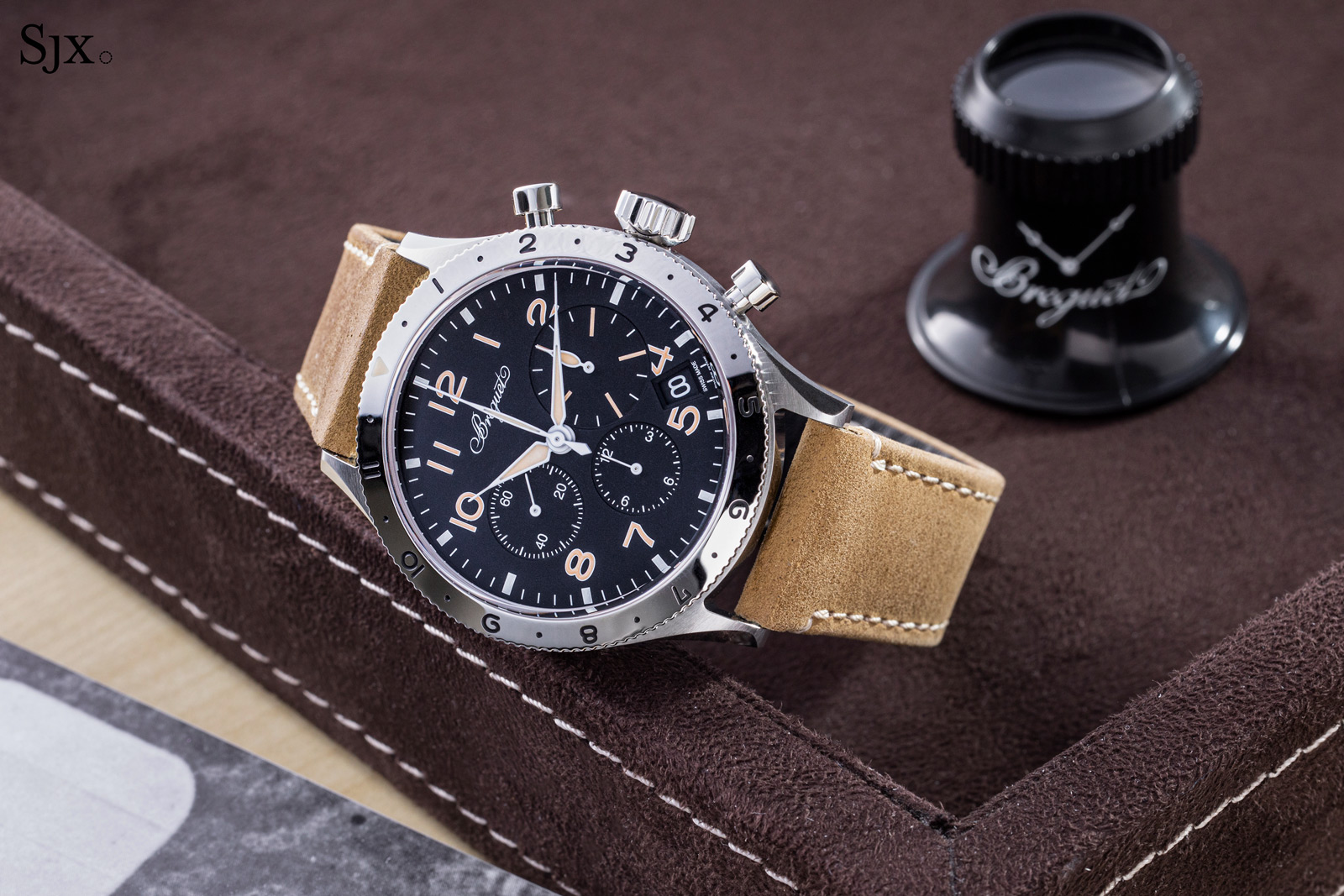
The ref. 2067 modelled on the civilian Type XX of the 1960s
Initial thoughts
After introducing the Type XX and Type XXI, Breguet has returned back to the Type XX model name with a new watch that retains many of the distinctive design elements that define the Type XX, while incorporating significant improvements to the design, details, and of course movement.
At 42 mm, the new Type XX is a large watch, but sized correctly for a pilot’s chronograph. The lugs are also relatively short so the watch sits well on the wrist. And enthusiasts will appreciate the fact that the case size corresponds to the movement.
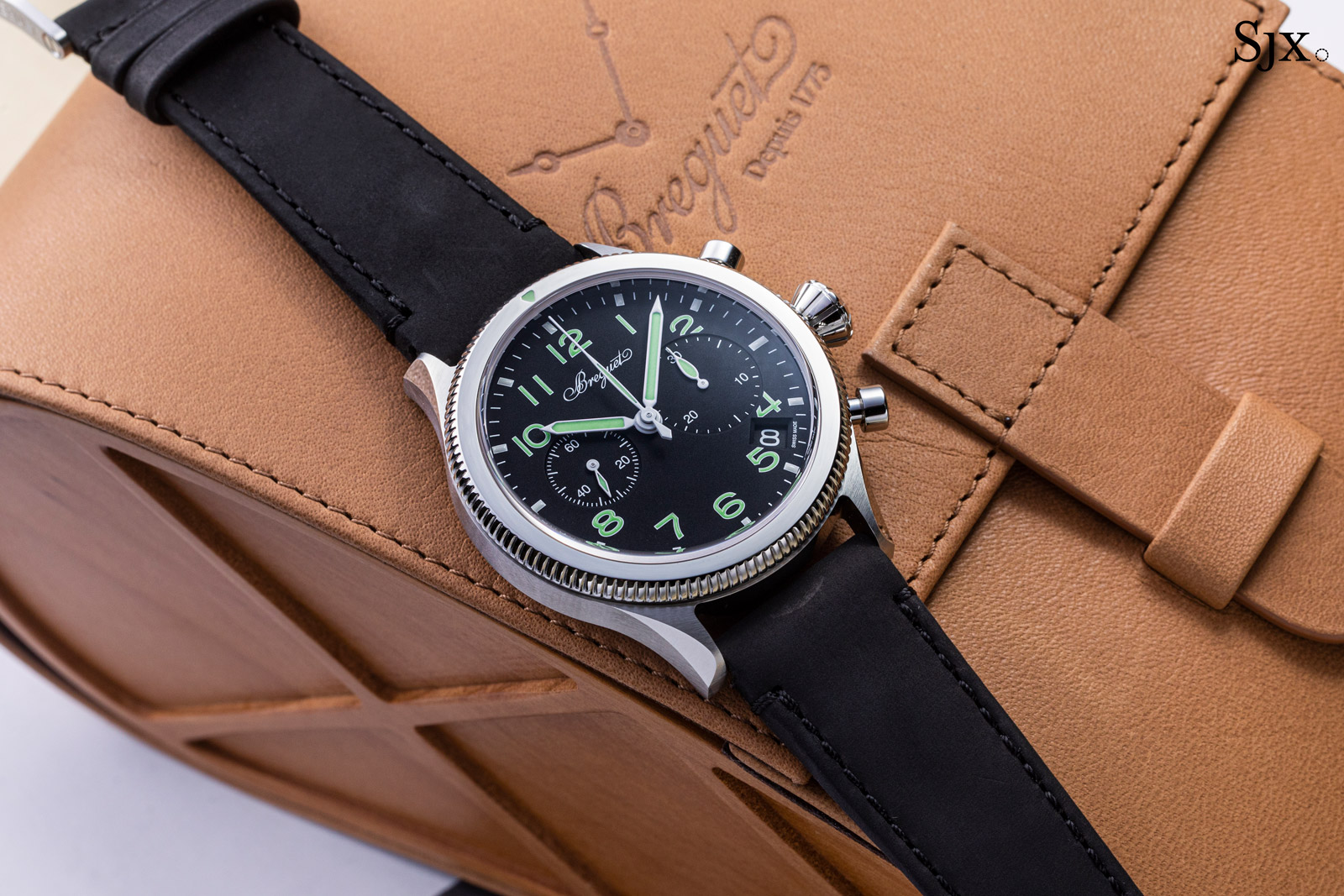
The military-inspired ref. 2057
The initial impression when examining the new Type XX for the first time is the high quality of execution, particularly in the case, when compared to Breguet’s preceding pilot’s chronographs.
The improvement in the case is especially obvious: while earlier models had cases with simple forms and lines, the Type XX has sculpted lugs with sharp edges and contrasting surface finishes.
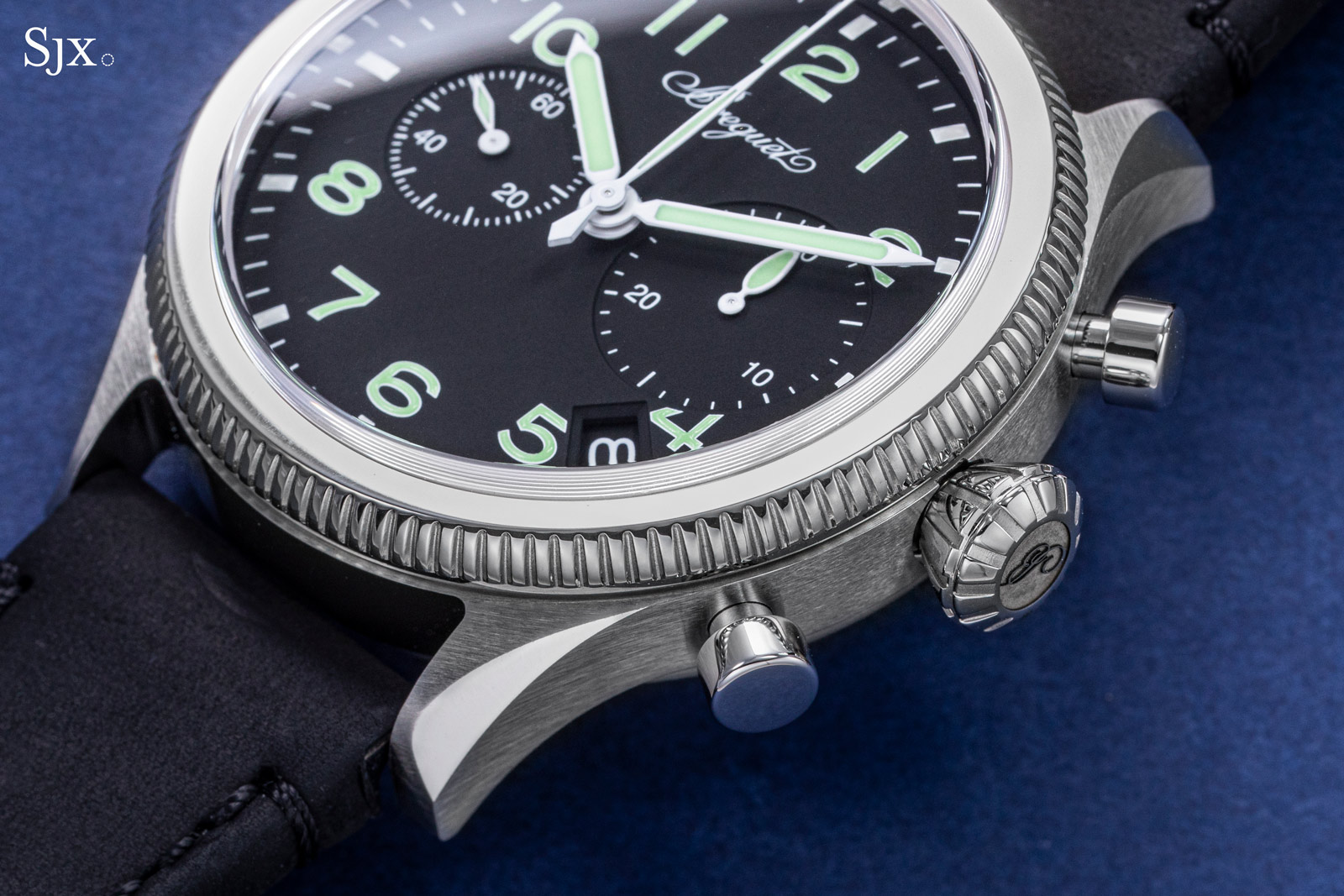
The case of the Type XX draws on the vintage originals
Importantly, the new Type XX is not merely about cosmetic changes. Inside is the cal. 728 (or the three-register cal. 7281), an all-new calibre with all of the features expected of a modern chronograph movement.
Besides the mandatory vertical clutch and column wheel, the cal. 728 has a flyback feature, just like the vintage originals. It also features a 60-hour power reserve and most notably, a high-frequency, 5 Hz balance secured by a full bridge. This puts the cal. 728 in good company as one of the very few recent chronograph movements that boast a high-frequency escapement.
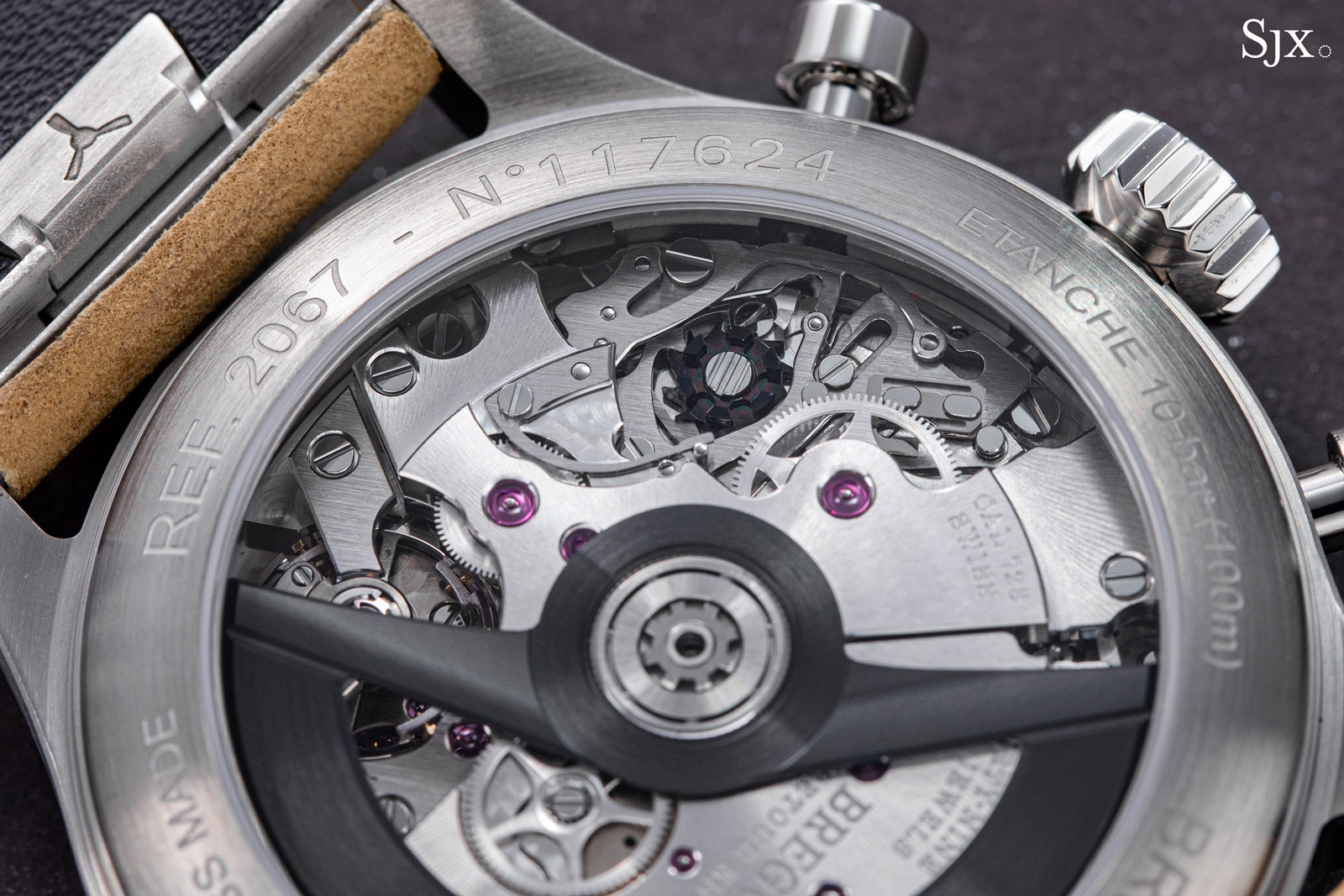
The cal. 7281
The Type XX is making its comeback in two variants: the two-register ref. 2057 with green lume (below left) and the three-register ref. 2067 with faux-vintage lume. Although both are essentially the same watch in terms of size and functions, they look and feel entirely different.
When I first saw images of the new pair, I thought the ref. 2057 would be easier to like. Drawing on the design of the military-issue Type 20 of the 1950s, it has the attributes of a classic Breguet pilot’s chronograph with its two registers and pencil-style hands.
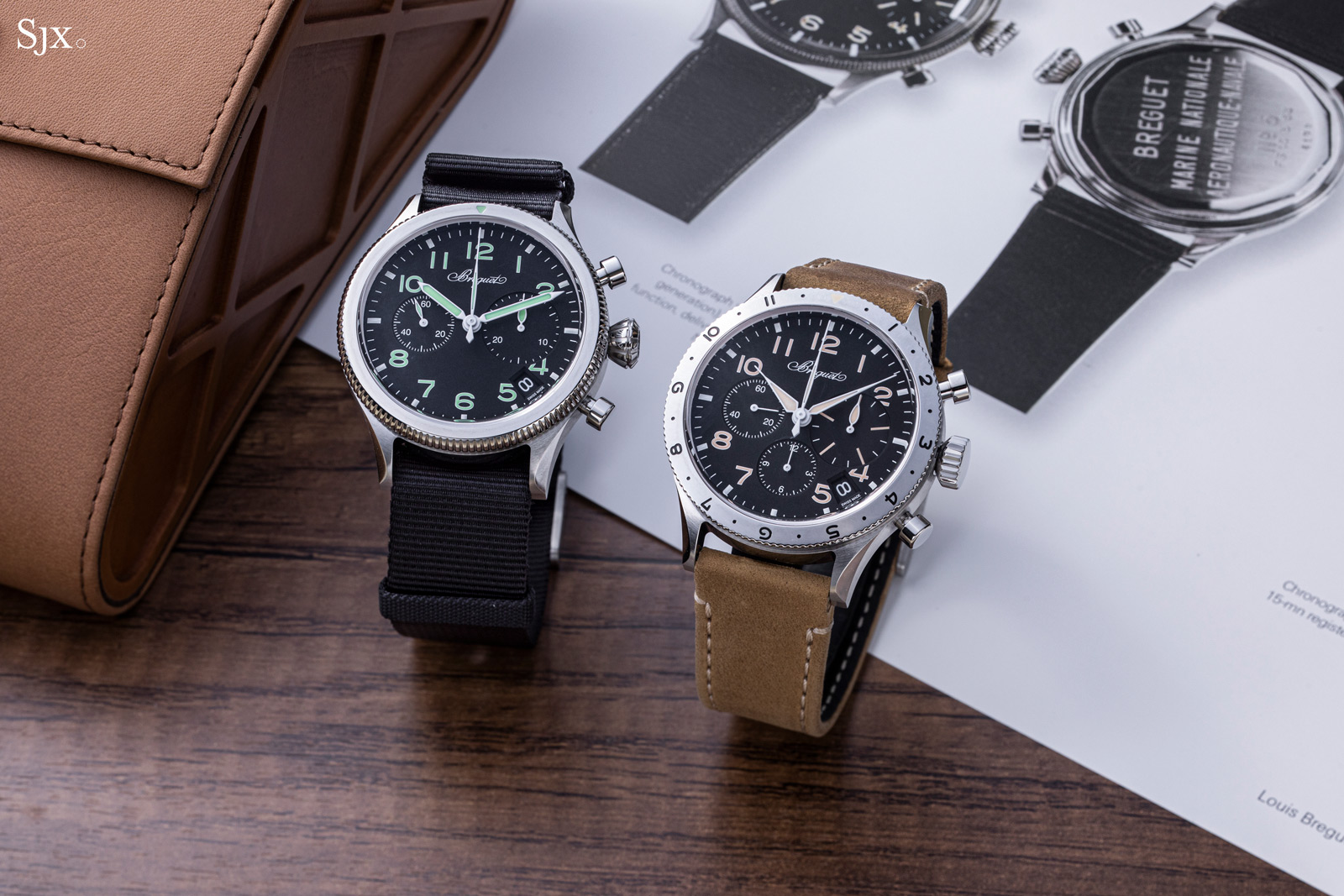
The ref. 2057 (left) and ref. 2067
In the metal, however, the ref. 2067 has more appeal. The lance-shaped hands seem peculiar initially – it is inspired by vintage Type 20s with similar hands – but the design is coherent and it works.
The ref. 2057, on the other hand, has green lume. No doubt modelled on the vintage Type 20 with radium paint on the dial – radium was greenish when fresh and new – the ref. 2057 might not be be everyone’s cup of tea because of the mint-green lume.
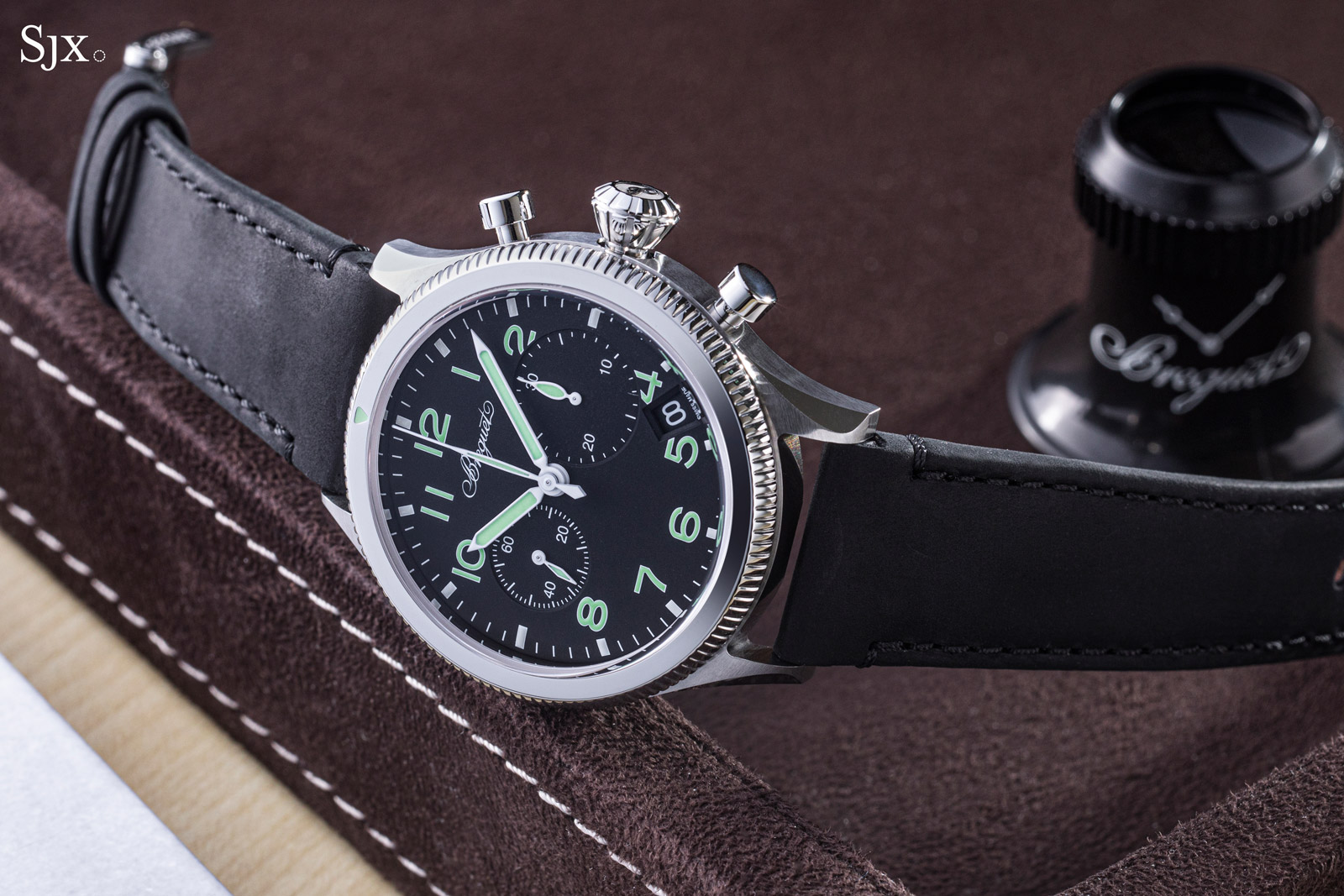
The ref. 2057
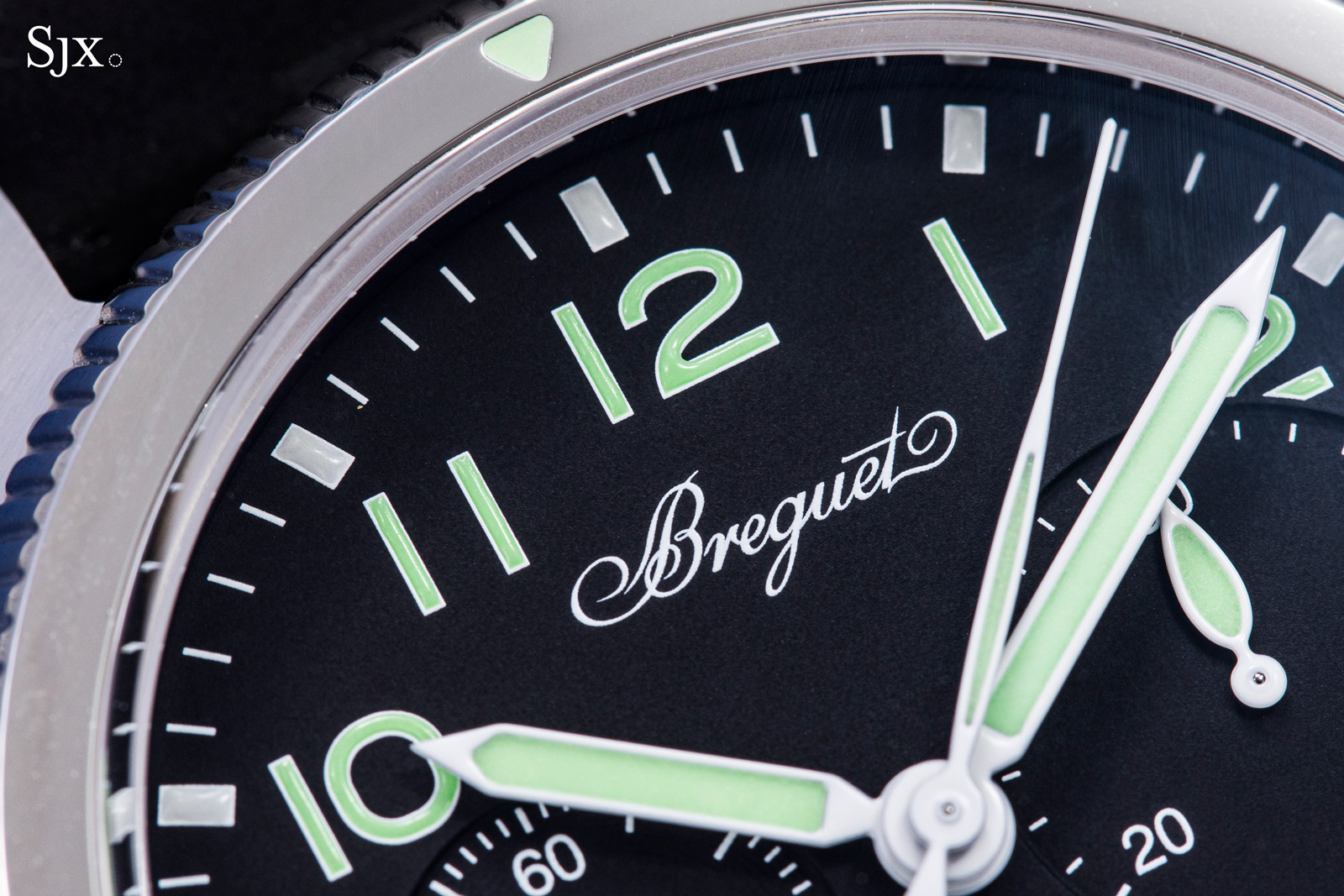
Both versions have a date window in-between four and five o’clock, with “Swiss made” underlining the date. As is often the case with vintage-inspired watches, the date looks out of place against a design rooted in the 1950s and 1960s.
The date has utility, but it would be a worthy sacrifice for aesthetics. Given that the Type XX is only just making its debut, so it is conceivable that future iterations might cater more to enthusiasts.
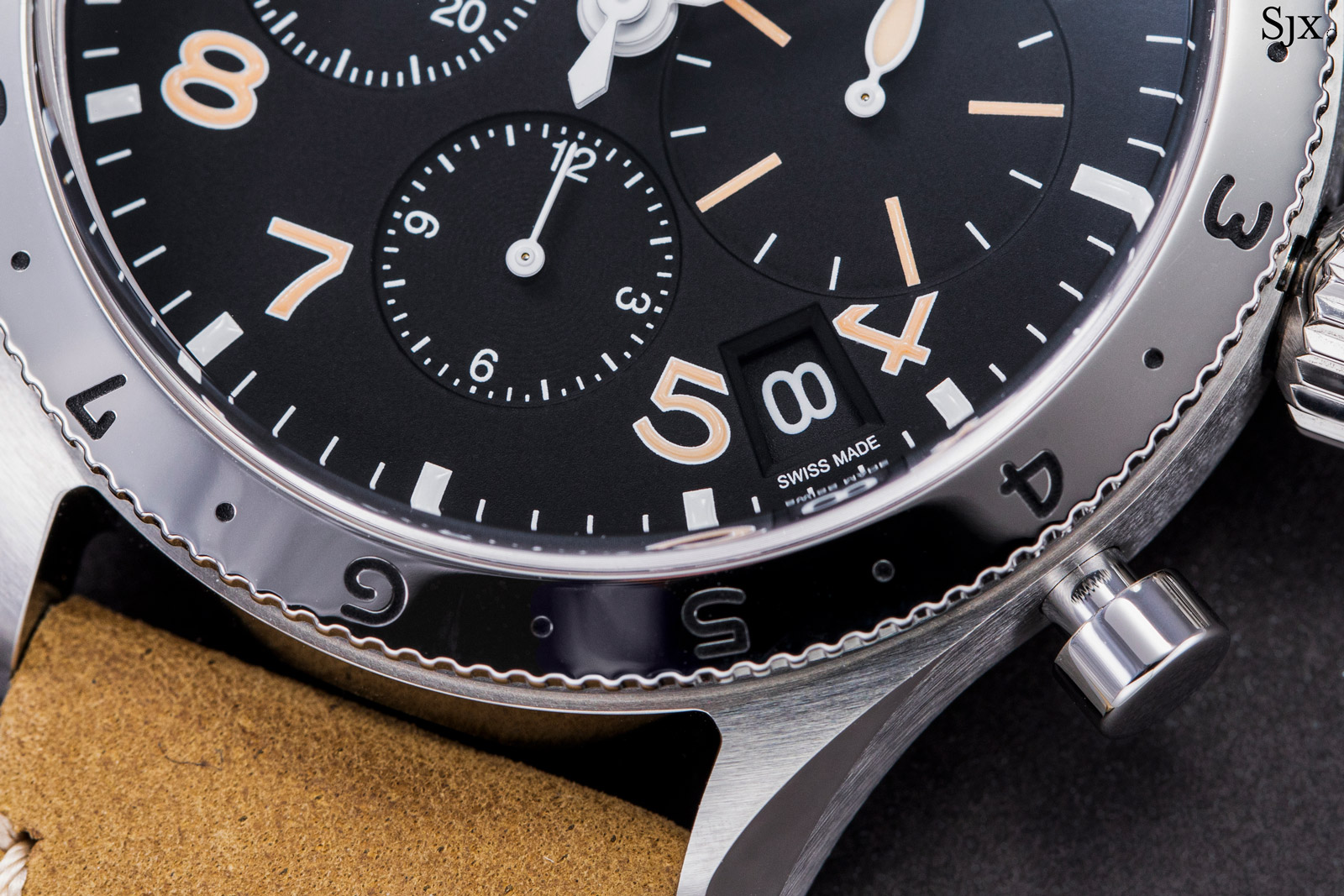
Priced at US$18,000 for either variant, the Type XX is competitively priced for a watch of its quality. The Audemars Piguet Code 11.59 Chronograph in steel, for instance, might be slightly fancier in terms of decoration but it costs over 50% more. And likewise for the Chopard L.U.C. chronograph.
Perhaps the closest rival of the Type XX in terms of price-quality ratio is the Blancpain Air Command, which is priced almost the same. But that is unsurprising since Blancpain and Breguet are sister brands.
Rooted in aviation
The history of Type XX begins in the early 1950s when the French military sought flyback chronographs for the pilots of the air force and air arm of the navy. French watchmakers like Breguet, Dodane, and Auricoste, were then selected to supply such chronographs, which were known as Type 20 after the military specification detailing the watch. (Subsequently Breguet applied the “Type XX” moniker to the civilian versions of its pilot’s watches.)
Even though the Type 20 was the first serially-produced military wristwatch made by Breguet, it already had a long history as a maker of supplier of clocks and instruments to the French navy. In fact, the company was appointed watchmaker to the French navy – horloger de la marine – in 1815.
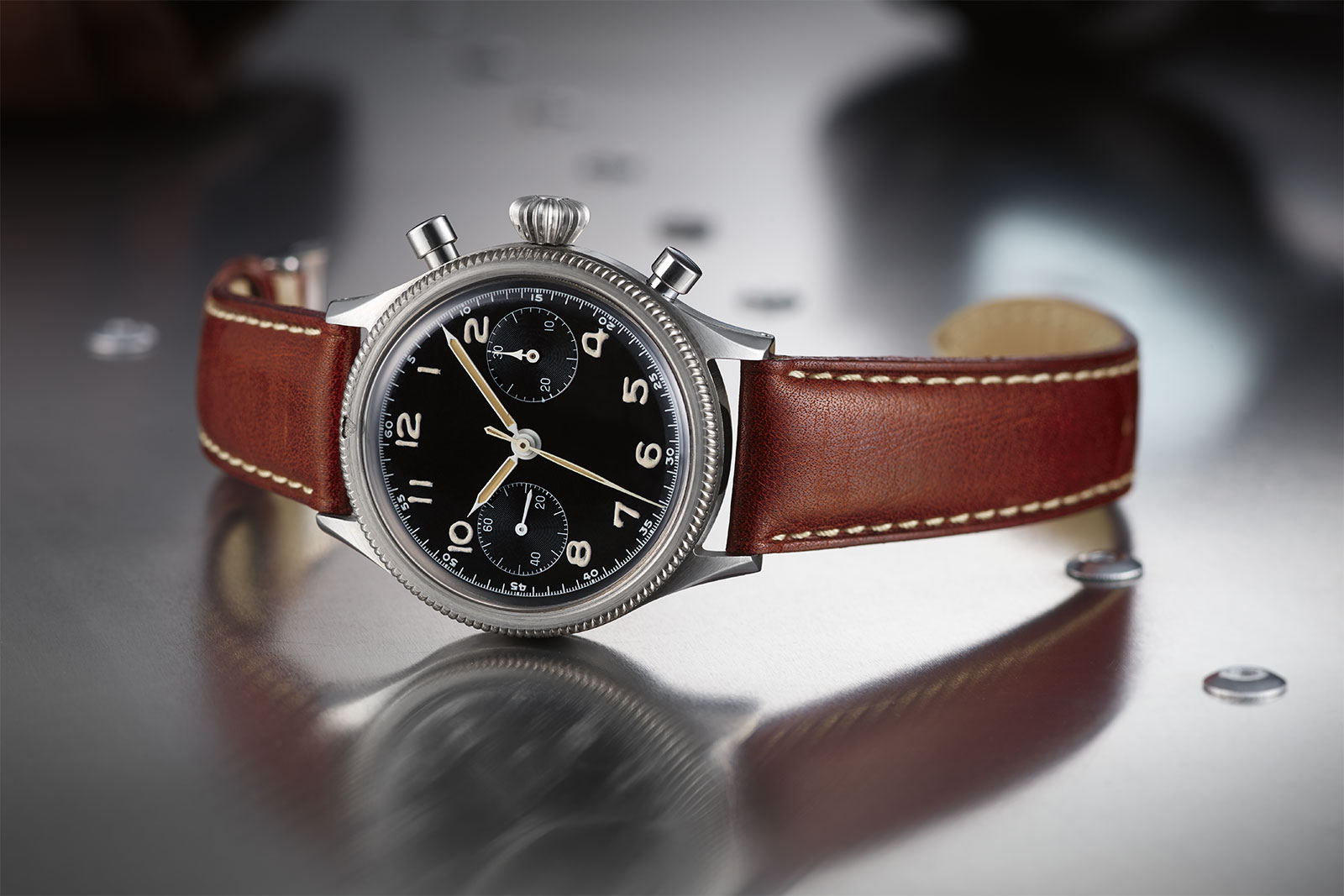
An early Type 20 ref. 5101/54 with a “sterile” dial from the mid 1950s. Image – Breguet
The first batch of Type 20s was made up 1,100 watches delivered between 1955 and 1959 to the French air force, all of which had two registers and “sterile” dials bearing no branding. Breguet continued to deliver variants of the Type 20 over the following three decades. In 1958, for instance, Breguet supplied the Aéronautique Navale, the air arm of the navy better known as “Aéronavale”, with a version of the Type 20 that replaced the traditional 30-minute totaliser with a 15-minute counter, providing the basis for the new ref. 2057.
Breguet’s pilot’s chronograph also gained traction beyond the military, resulting in civilian equivalents known as the Type XX (“XX” is the Roman numeral for “20”). The civilian models were often identical to their military equivalents, but lacked the military-issue engraving on the case back. Breguet even made a handful of solid-gold Type XXs, including an example that was sold at Phillips in 2018.
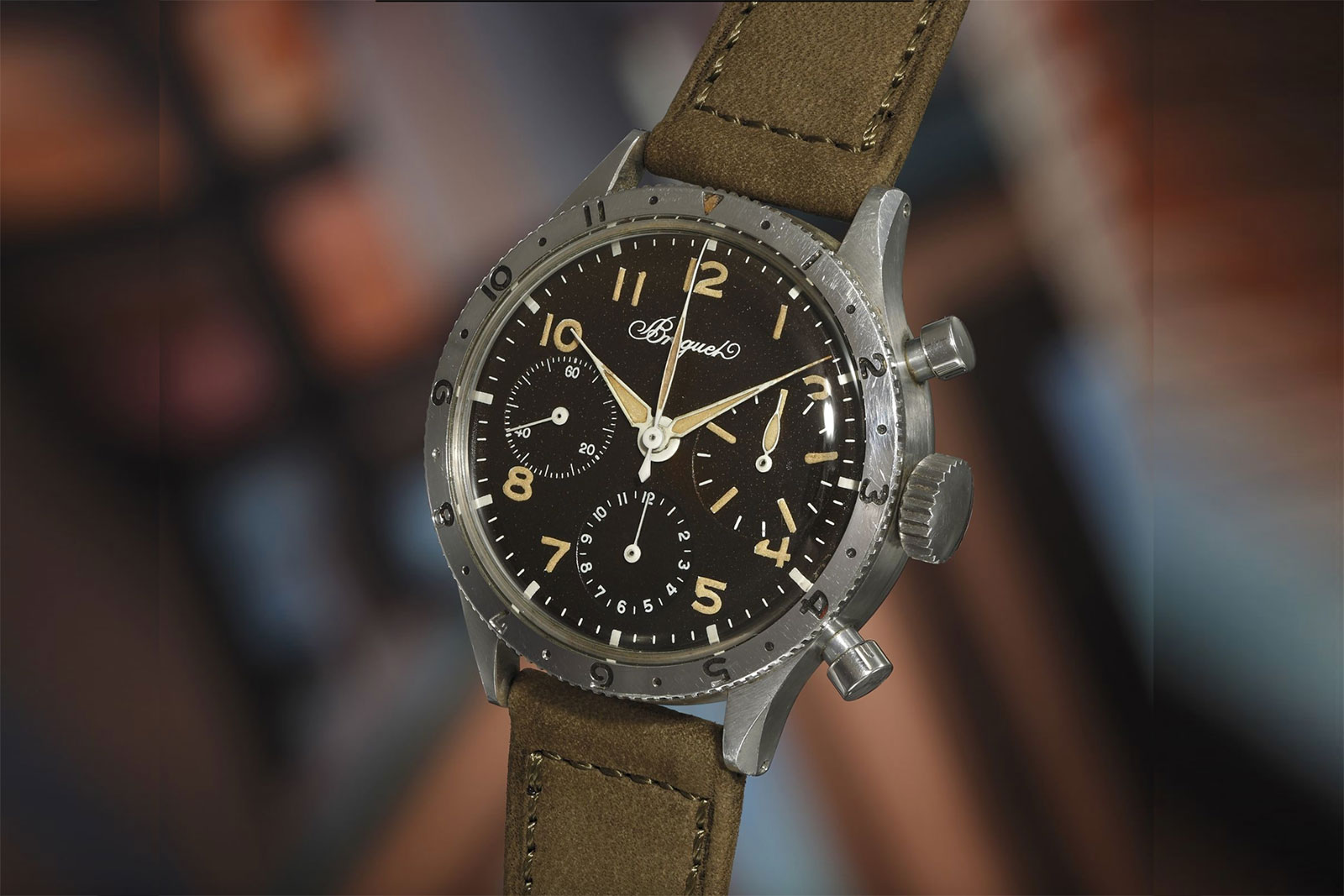
A Type XX from 1967 of the type that inspired the ref. 2067. Image – Phillips
The vintage Type 20 was to remain in production until 1986. The modern-day Type XX, however, only arrived in 1995 when the ref. 3800 Aéronavale was launched.
Arguably the quintessential contemporary Type XX, the ref. 3800 was first launched as a limited production model with a gold cap over the crown before entering the catalogue as a regular-production model without the gold cap. The ref. 3800 was equipped with the cal. 582 (derived from the Lemania cal. 1350), an automatic movement with a flyback function, just like the vintage originals.
The ref. 3800 subsequently spawned variants such as the ref. 3820 Transatlantique (essentially the same but with a date), an alarm watch (ref. 3860), as well as subsequent models like the Type XXI and Type XXII that were powered by new and different calibres.
And now the new Type XX duo replaces all of the current pilot’s chronographs, which are no longer in production.
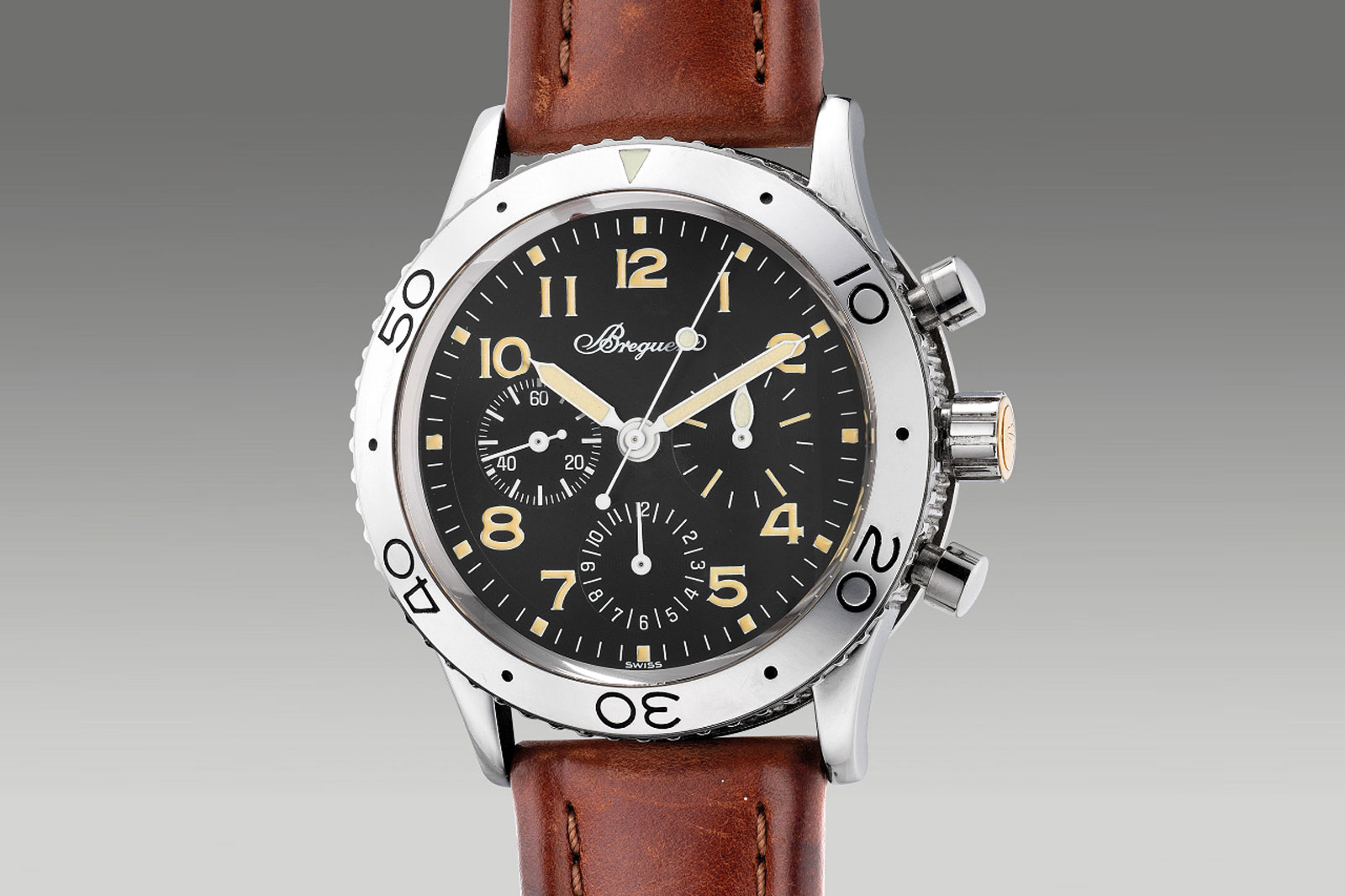
An example of a first-generation Type XX ref. 3800 from 1995 that features the gold cap on the crown. Image – Phillips
Military and civvy
The new Type XX is offered in two versions: the Type 20 Chronographe 2057 modelled on the military Type 20, and the Type XX Chronograph 2067 that takes its cues from civilian variants. Both are identical on a foundational level as they share the same 42 mm case containing an almost-identical movement. But they look entirely different because the key elements, namely the bezel, crown, and lume, are unique to each.
Inspired by early, 1950s variants of the Type 20, the ref. 2057 has a two-register dial with a “big eye” counter at three o’clock for the minutes. It’s matched with luminescent paint in a vibrant green on the markers and hands that creates a striking contrast against the black dial.
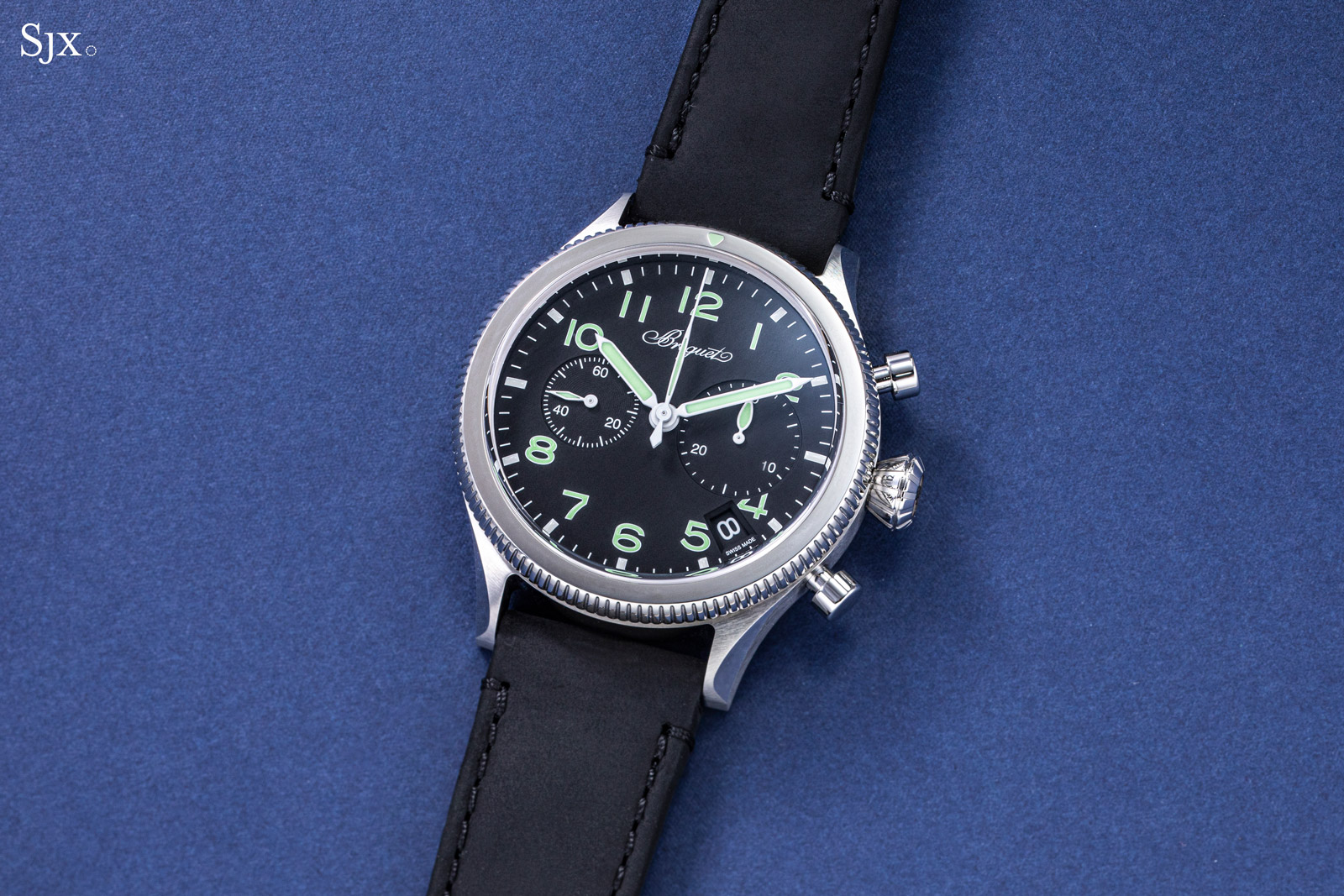
Taking after the colour of fresh radium, the dial approximates how Type 20 would have look fresh off the press in the 1950s. It might be too green for some, but it certainly delivers excellent legibility.
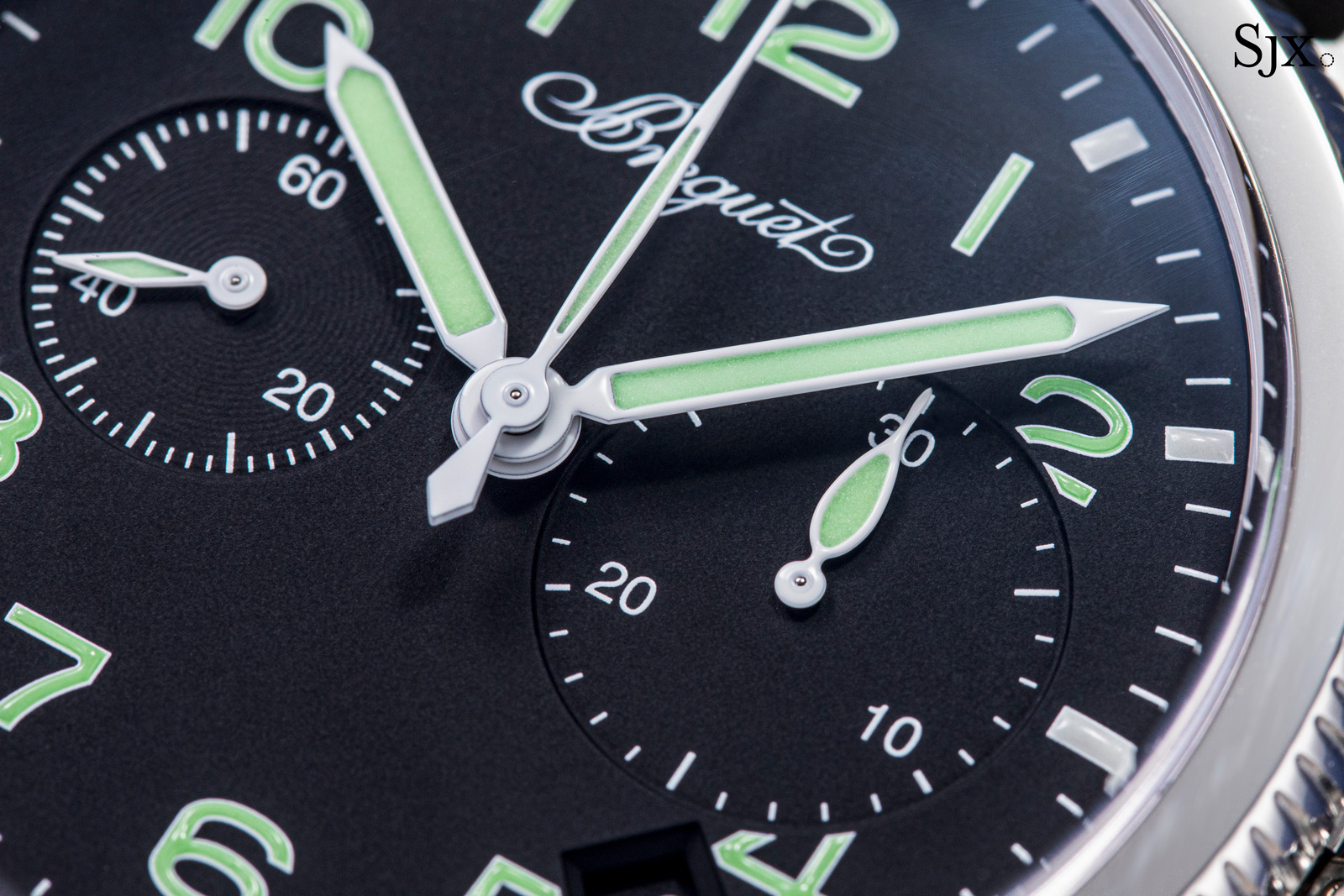
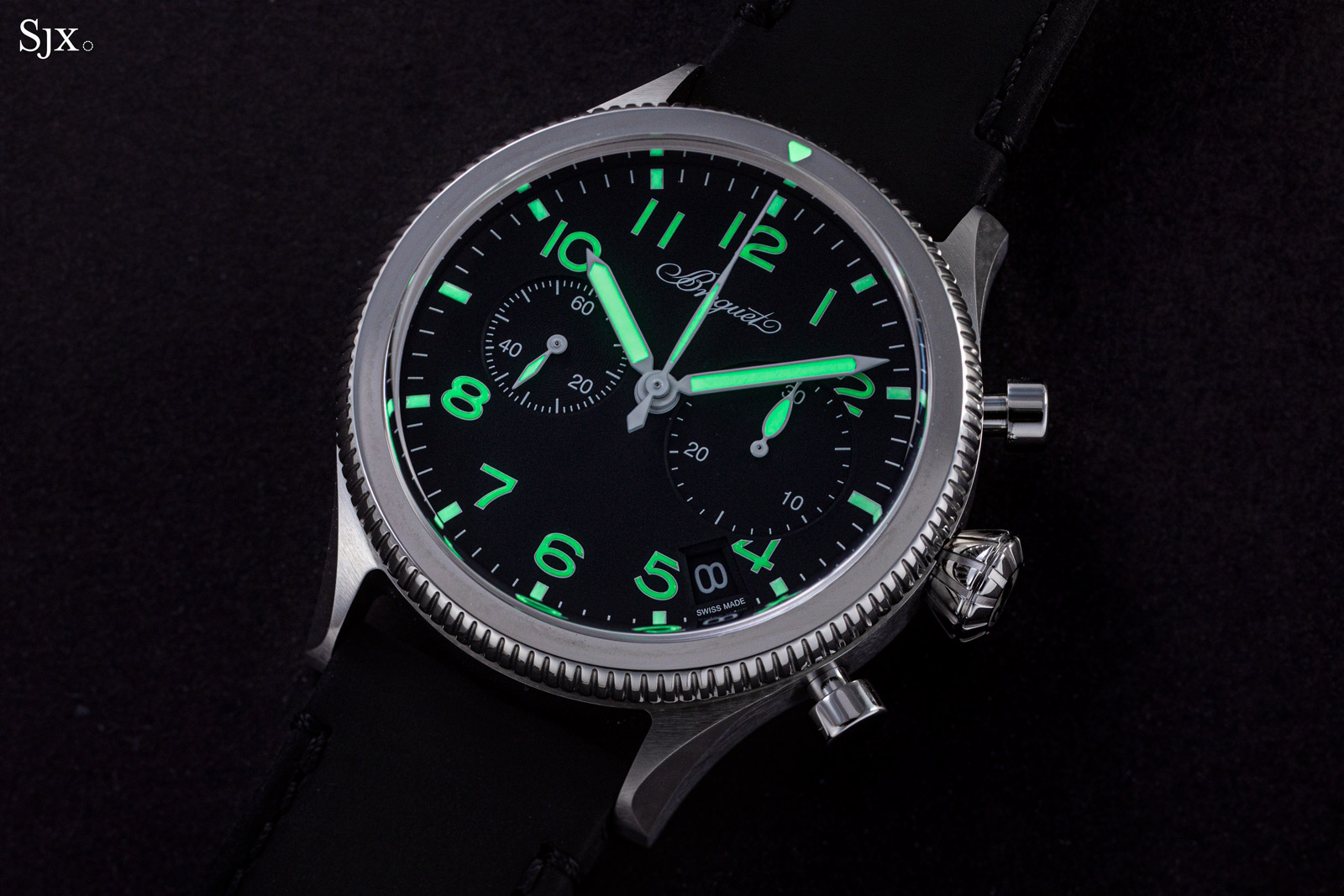
The ref. 2057 is fitted with a 120-click, bidirectional bezel that serves as a countdown timer – it is engraved with a single triangle to mark a specific time. Also unique to the ref. 2057 is the “onion” crown found on the earlier variants of the vintage Type 20.
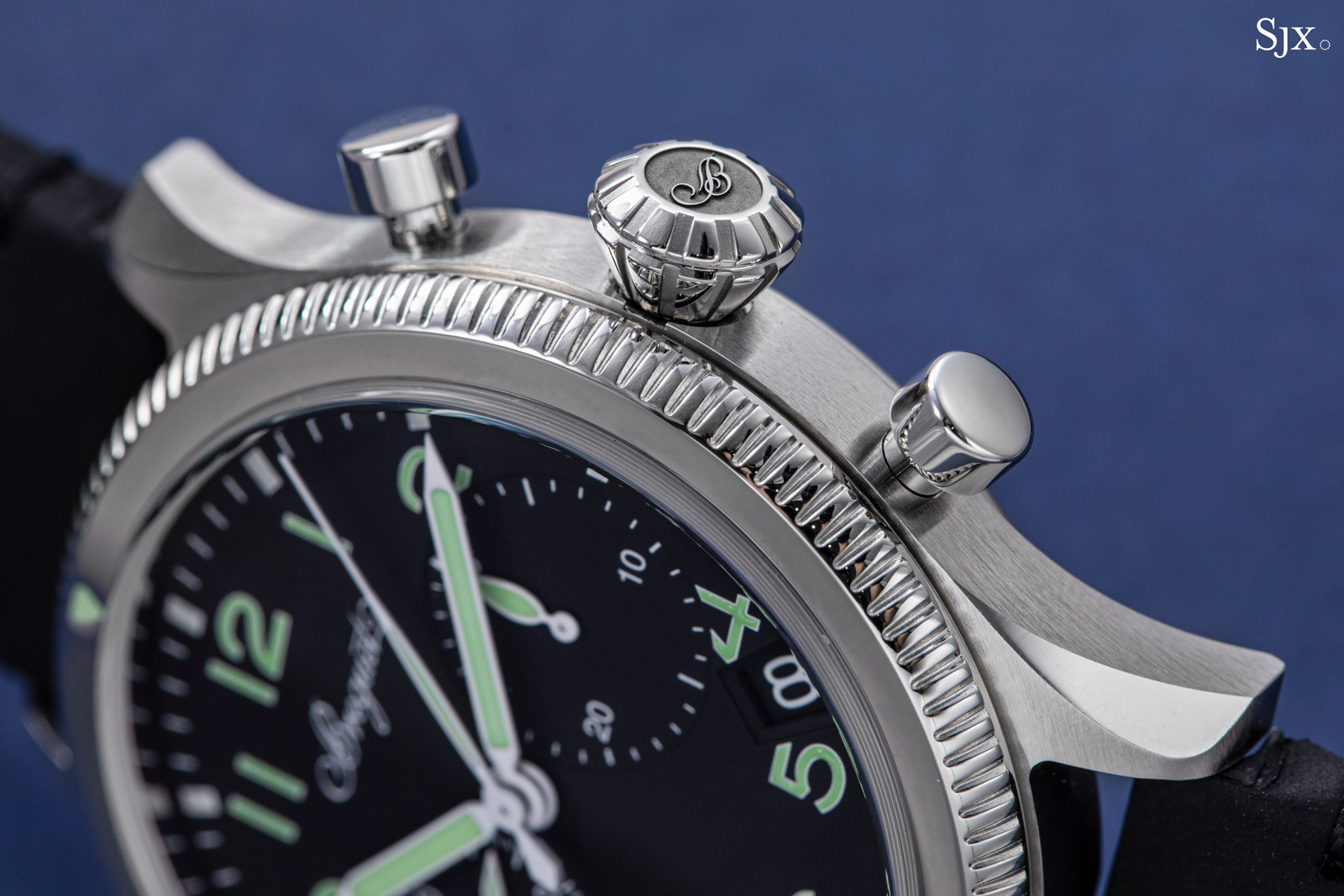
On the other hand, the ref. 2067 is based on civilian models from the 1960s. It feels like an entirely different watch next to the ref. 2057.
To start with, the dial has three registers, including an oversized 15-minute counter at three, while the bezel is a 12-hour bidirectional affair to measure elapsed hours. And instead of the “onion” crown, it has a flat crown.
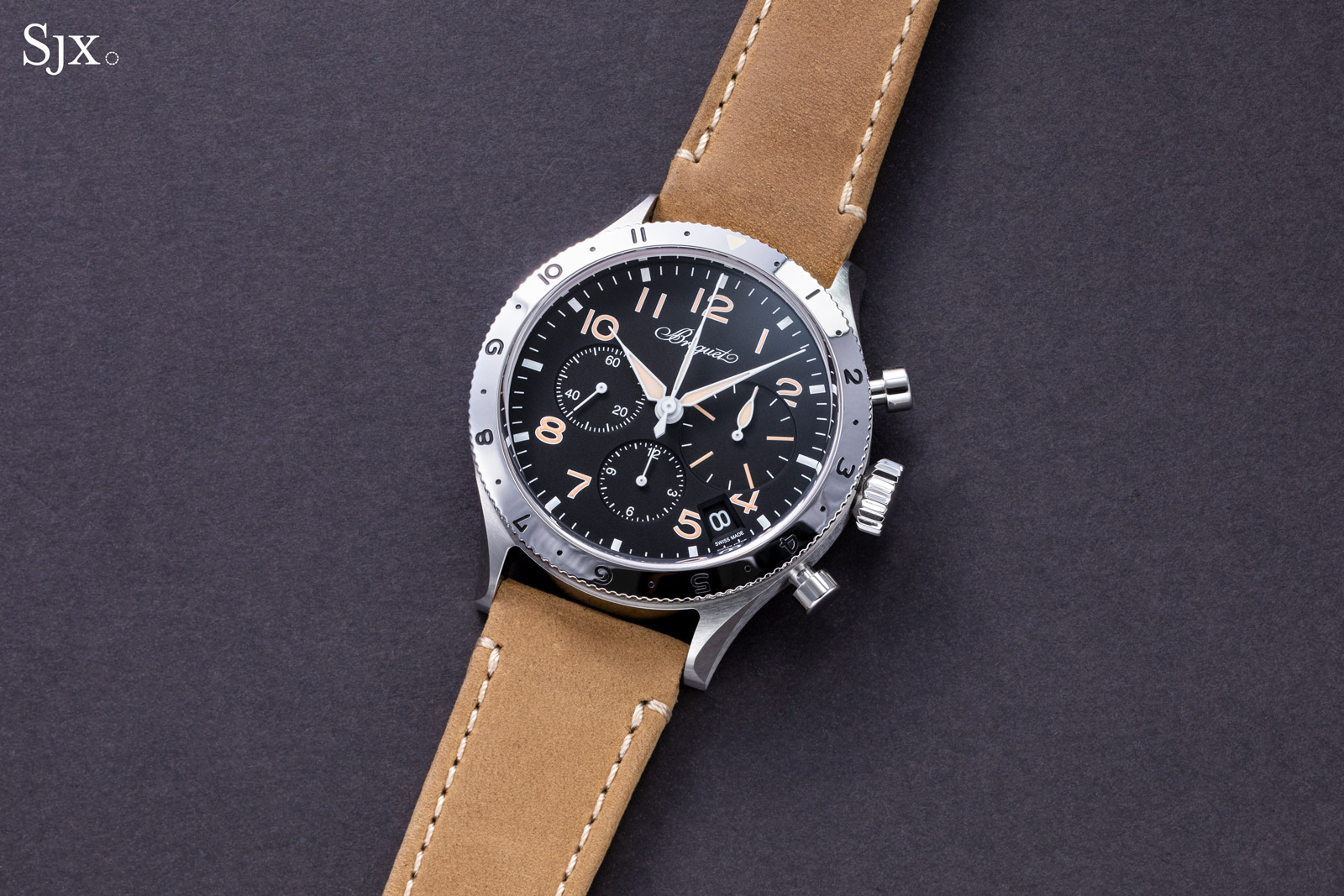
Because the dial uses ivory-hued lume, the ref. 2067 has a vintage feel. Although such faux-vintage lume is overused given the popularity of vintage remakes, the design of the ref. 2067 comes together well.
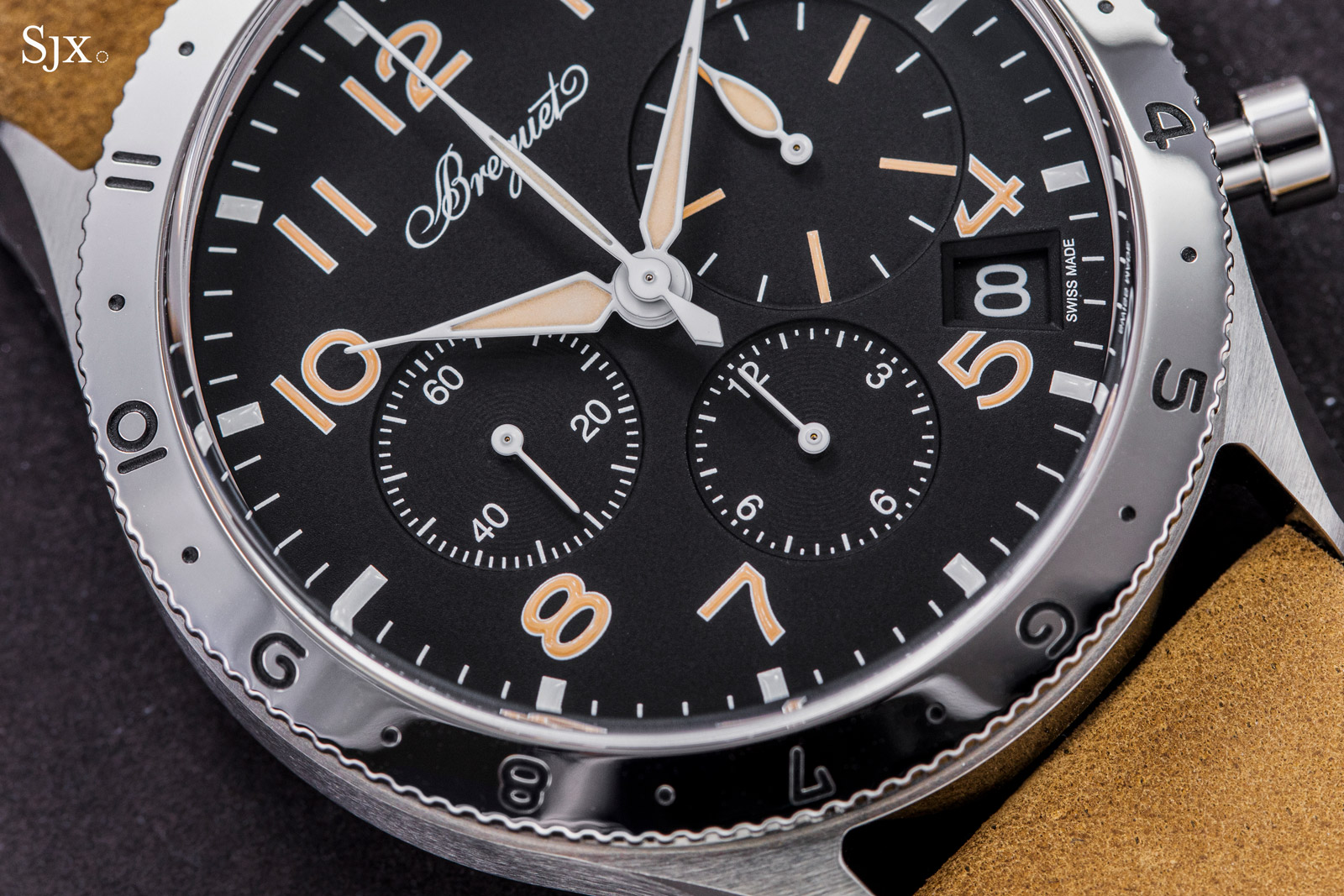
One of its most unusual features are the lance-shaped hands, which are found on some examples of the vintage Type 20. They give the watch an unusual aesthetic that sets it apart from most aviator’s watches.
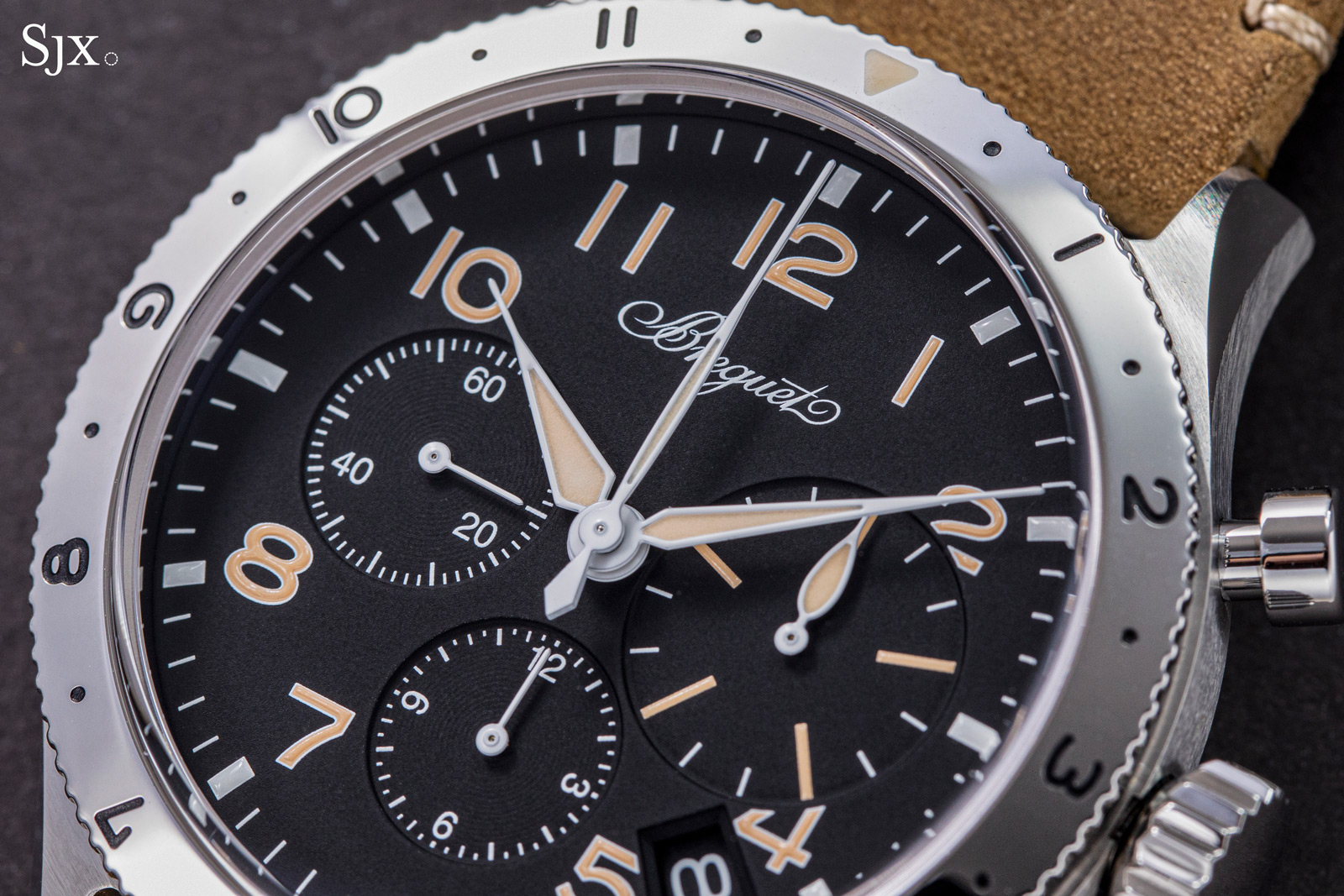
Both versions have the same case that’s 42 mm in diameter and 14.1 mm high. The case is large, but feels appropriately sized for a pilot’s chronograph. While height seems substantial, the watch doesn’t look as thick as the measurement implies as the case middle is relatively thin.
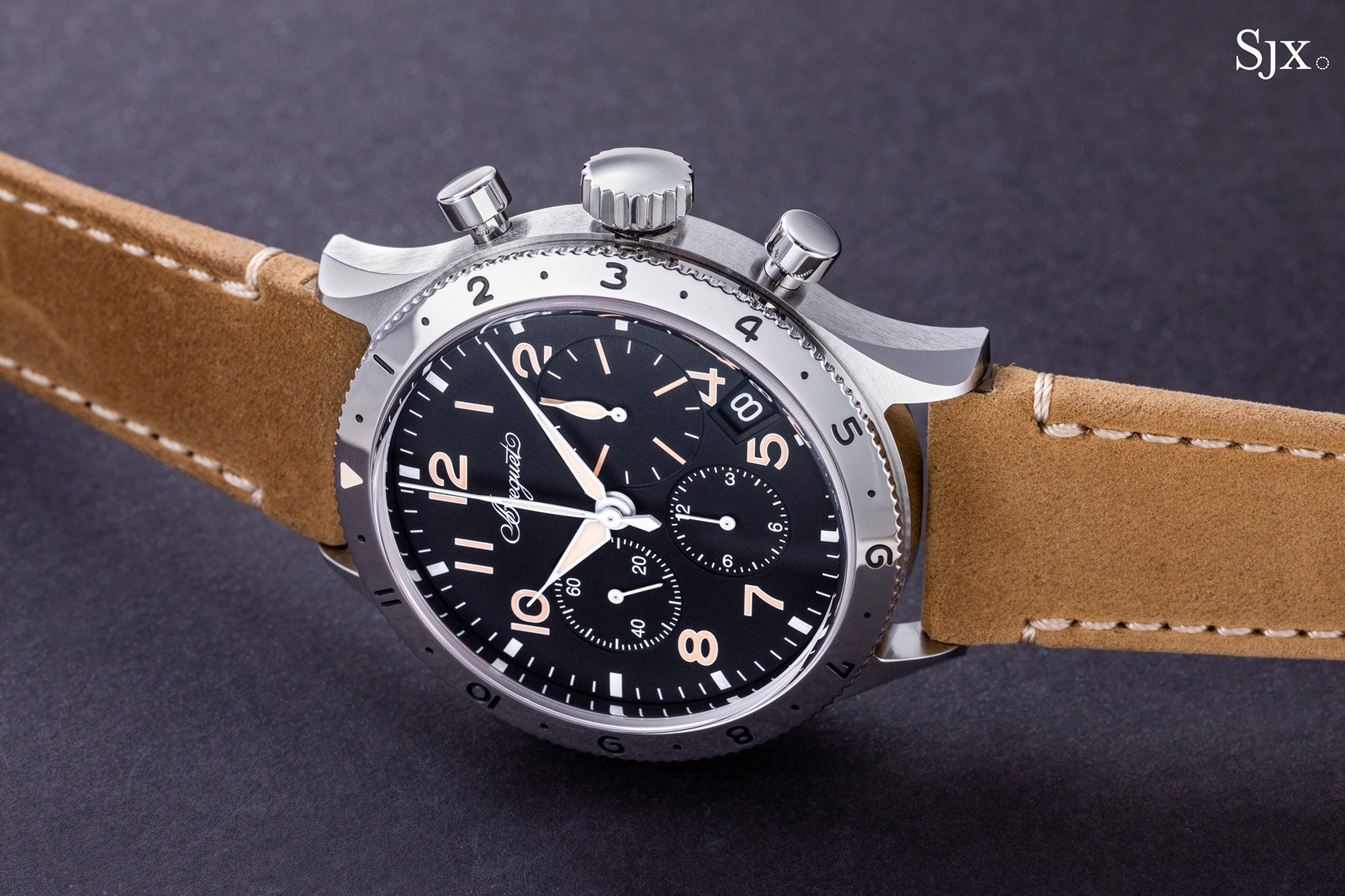
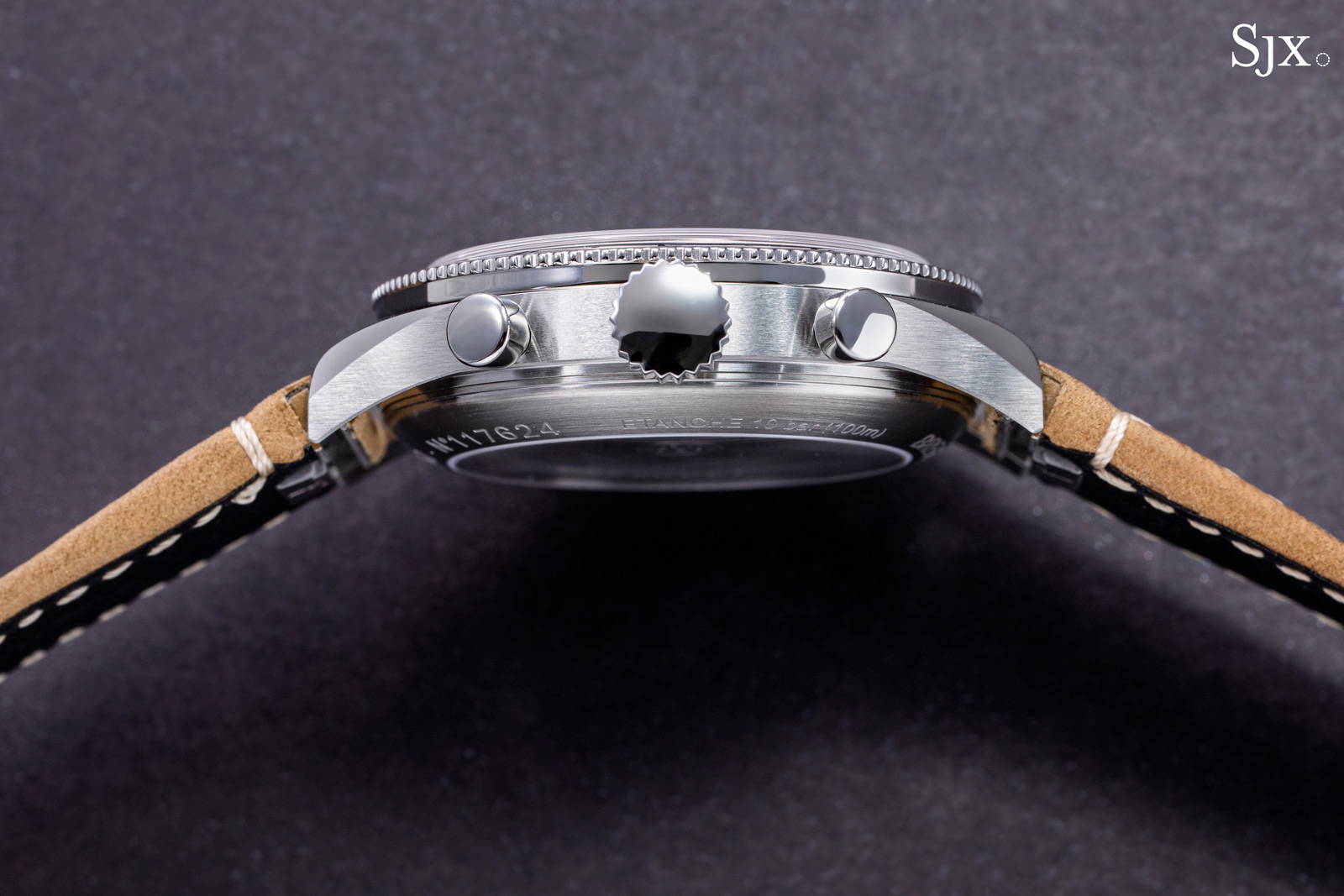
Consistent across the two models, the case finishing is precise. The bezel and chamfer are mirror polished, while the flanks and tops of the lugs are brushed.
The neat finishing is particularly evident on the lugs, which are perhaps the defining feature of the case. The lugs sport a wide chamfer on the lugs that’s also found on some versions of the vintage originals.
The execution of the case is excellent save for one detail: the engraving on the back is done in a sans serif font that feels too simplistic for a watch that leans on a storied historical reputation.
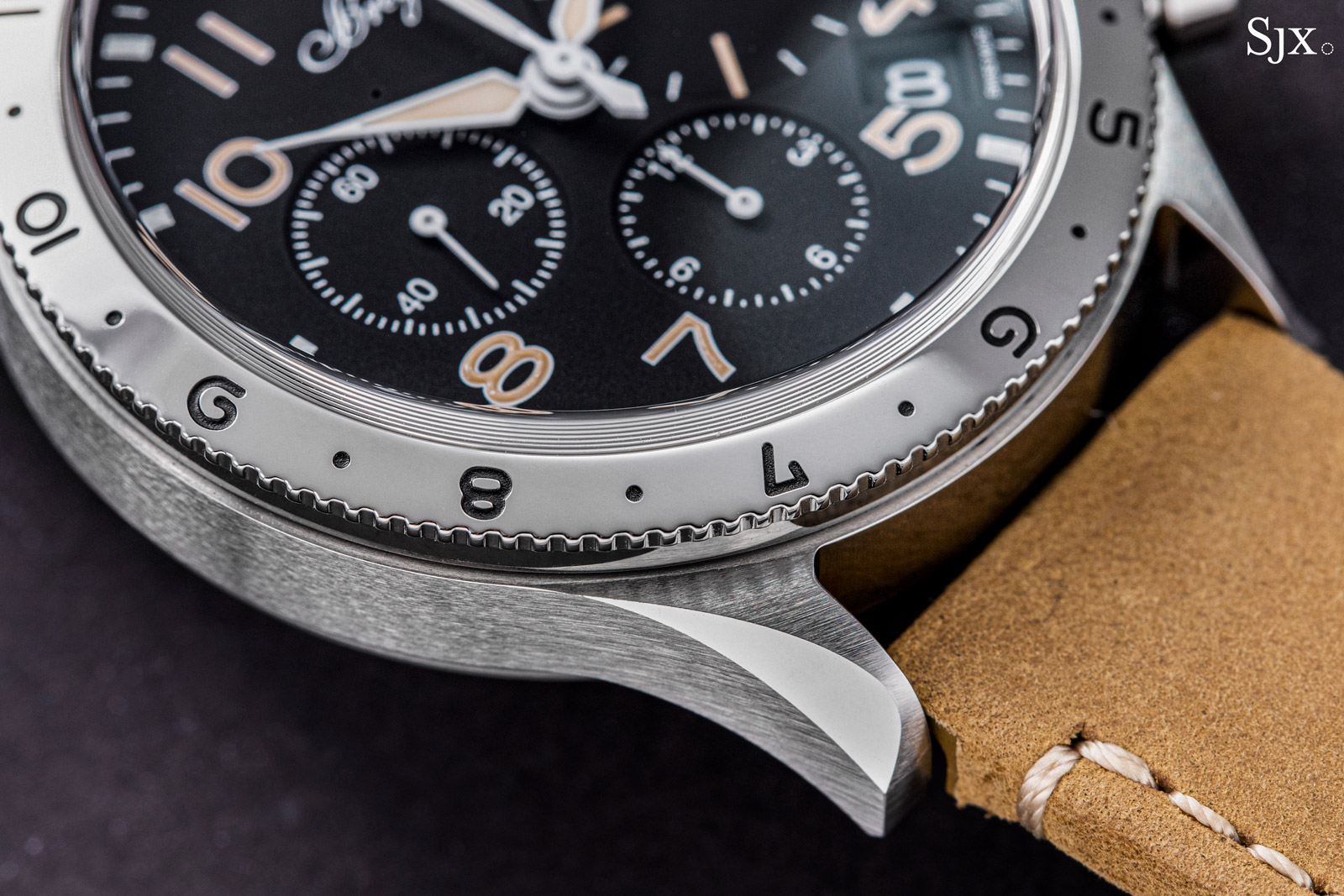
Both models also feature the rapid interchange system (RIS), a quick-release mechanism that allows easy removal of the strap. Depressing a button on the reverse of the strap lifts a catch within the strap, releasing it from the spring bar. The RIS has a downside though, as the RIS mechanism results in a stiff and thick section of the strap near the case.
Importantly, RIS is actually contained inside the strap, rather than the case or spring bars. This means the Type XX will accommodate conventional straps since the case uses ordinary spring bars, so owners won’t be limited to Breguet straps if they want more options.
In addition to the leather strap, the Type XX is also delivered with a NATO-style fabric strap.
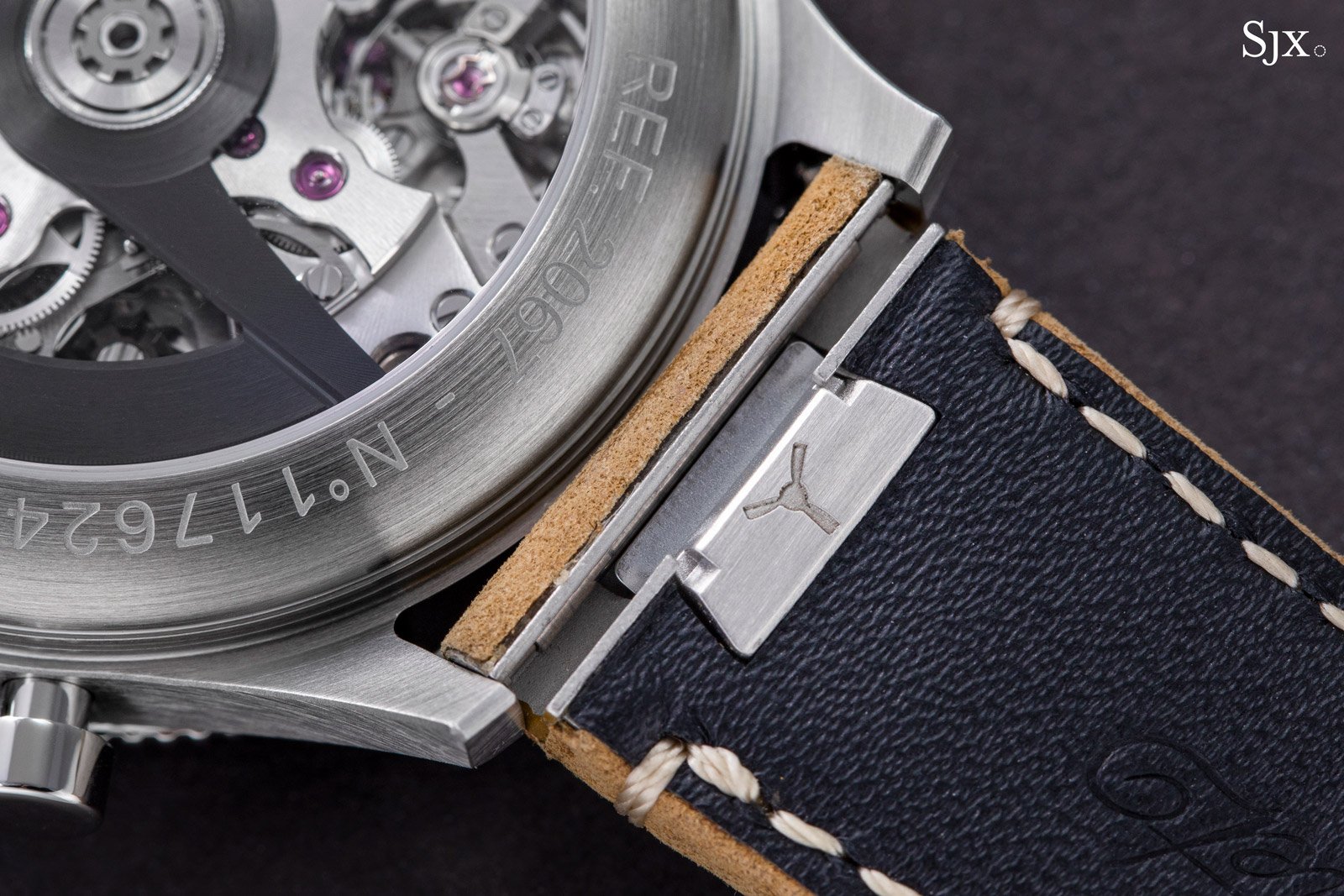
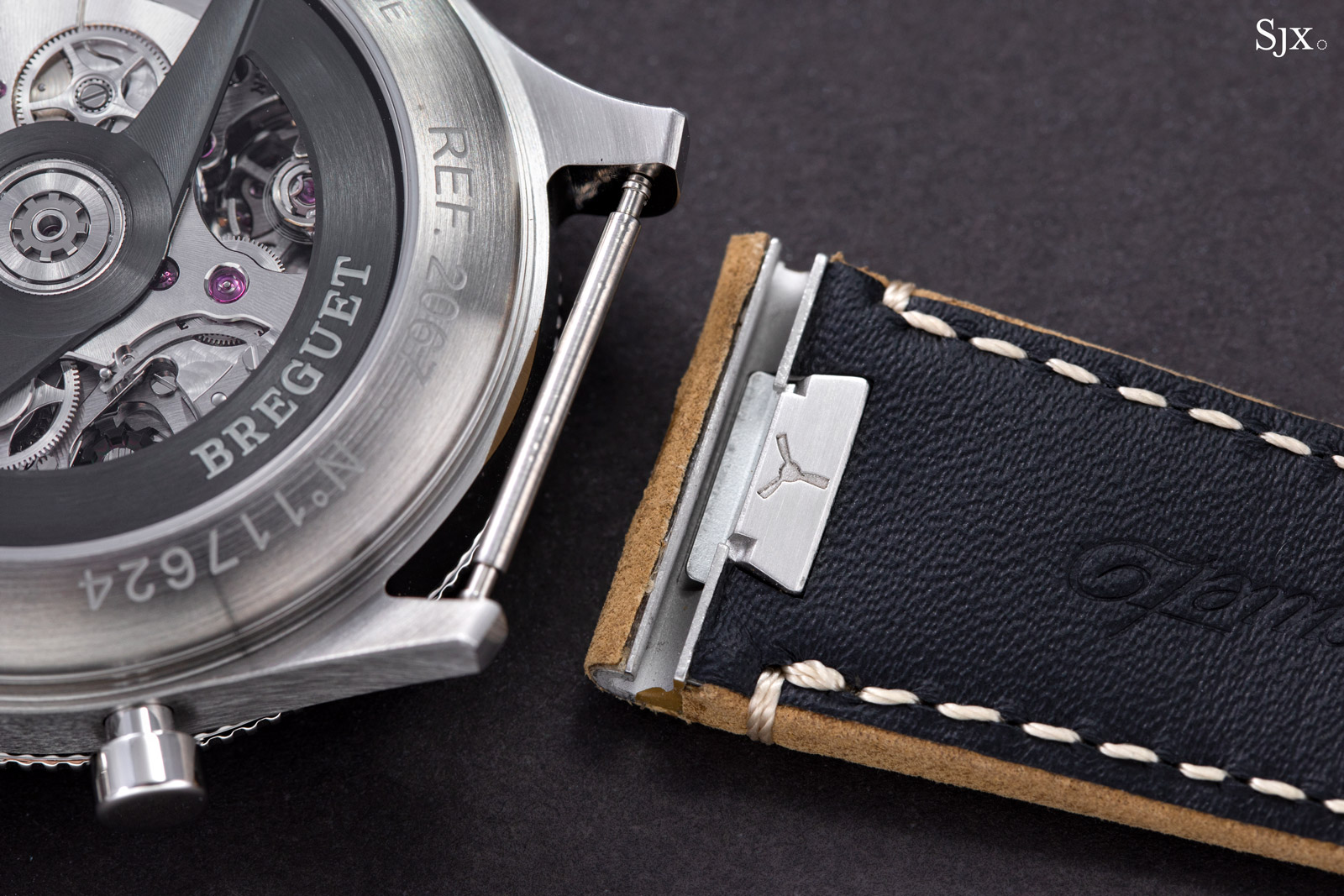
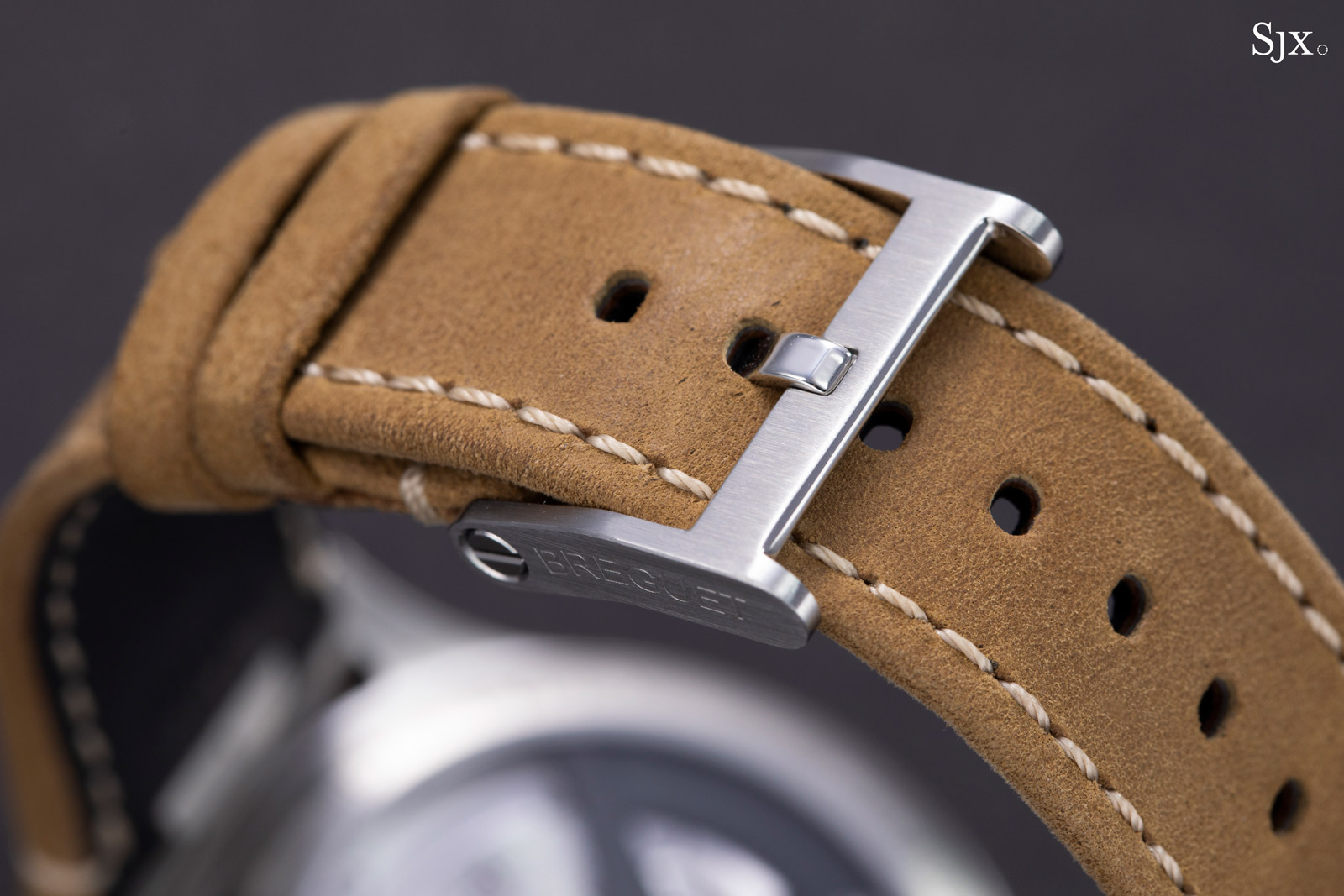
The pin buckle of the Type XX is unique to the model
Cal. 728
The Type XX is equipped with a newly developed movement, the cal. 728 and cal. 7281 in the refs. 2057 and 2067 respectively. Both calibres are largely identical, with the differences being the registers. For simplicity we’ll just refer to the movement as the cal. 728.
The calibre has the features typical of modern movements from high-end manufactures. Aside from the flyback function synonymous with a pilot’s chronograph, it has a column wheel, vertical clutch, a generous 60-hour power reserve, and a balance that runs at 36,000 beats per hour, or 5 Hz.
Theoretically delivering more stability due to its higher velocity, the high-frequency balance is especially notable as it marks the cal. 728 as one of the few contemporary high-frequency balance chronograph movements.
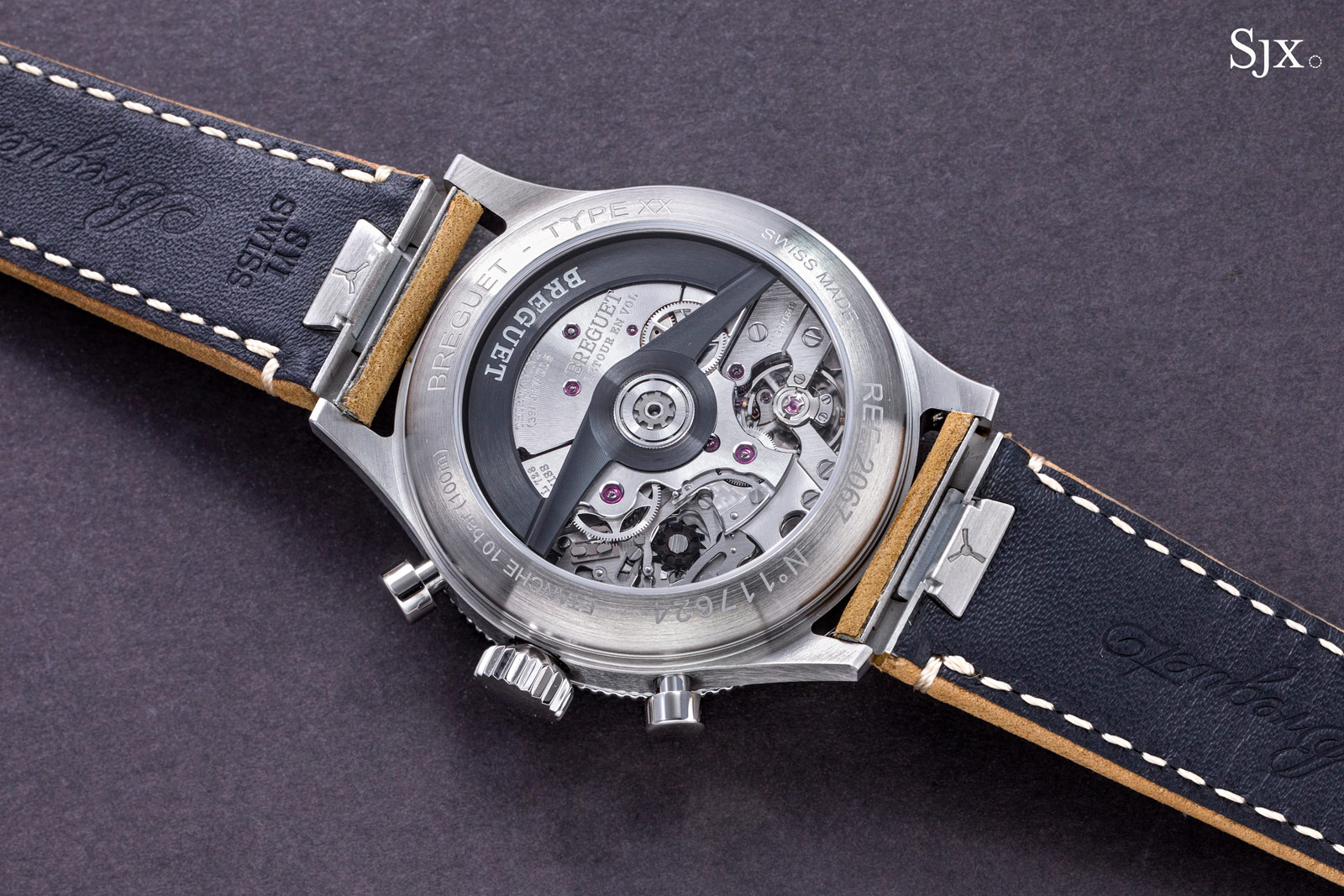
The cal. 728
Like most contemporary Breguet movements, the cal. 728 includes silicon tech, namely the balance spring, escape wheel, and pallet-lever horns.
As an aside, while the cal. 728 might seem similar to the Blancpain F388B inside the Air Command, the two calibres are distinct, right down to an architectural level. It is clear that going train and in-direct seconds train in the cal. 728 and F388B are arranged differently.
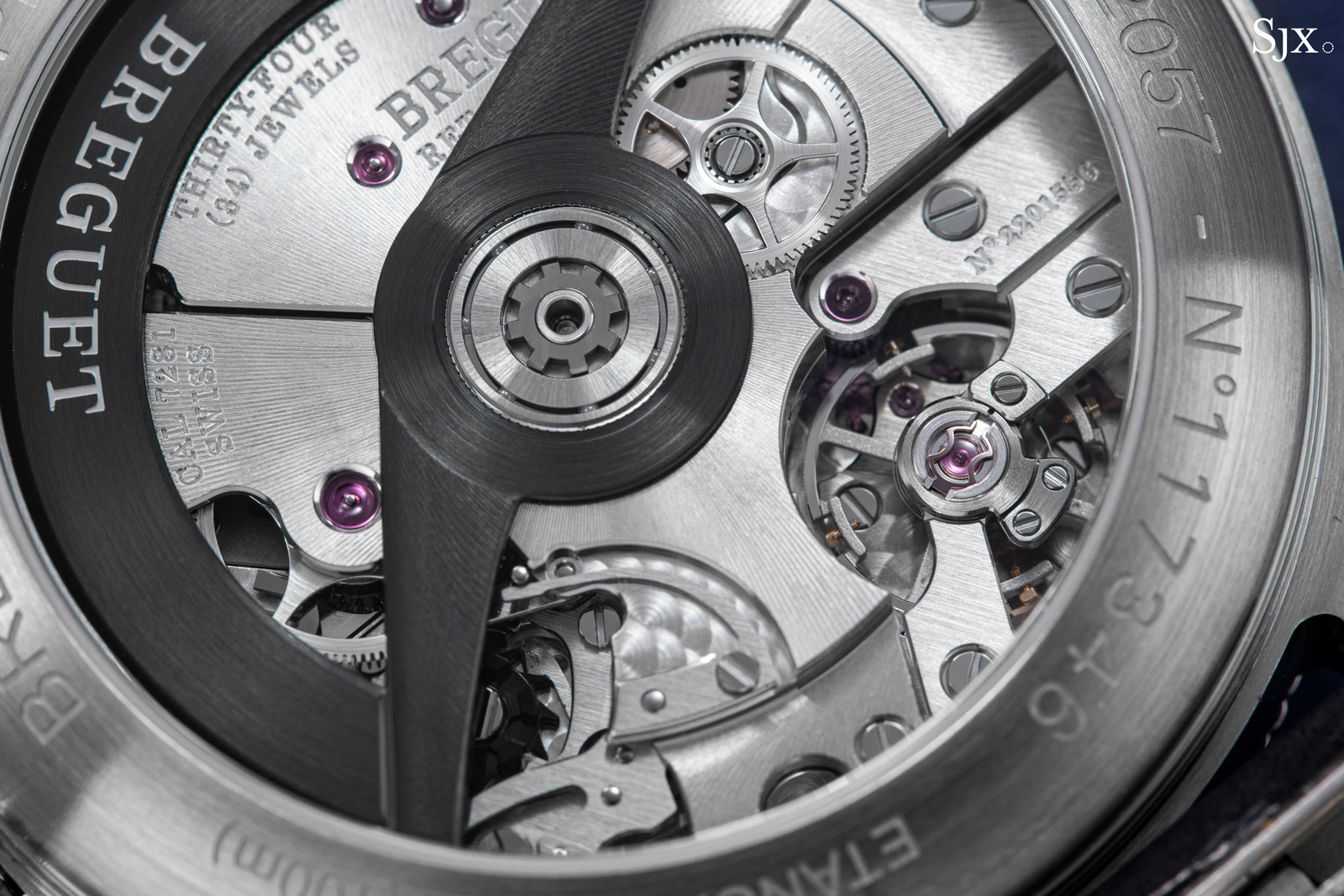
The cal. 728 has a clean, monochromatic aesthetic thanks to its neat, thorough, albeit industrially applied, decoration.
The bridges are finished with a fine radial graining that is simple, but up close the movement reveals sharply executed details. All the screws, jewels, and pins sit in polished countersinks, while the wheels reveal chamfered spokes and inners edges. The steel chronograph levers are straight grained on top and sport mirrored bevels on their edges. A
There’s nothing flamboyant about the movement, with the sole flourish being a blackened oscillating rotor loosely modelled on the wing of an aircraft. According to Breguet, the monochromatic movement aesthetic was intentional in order to match the functional aesthetic of the Type XX.
Movement enthusiasts, however, would probably prefer a bit more colour in the movement. Subtle accents like blued steel elements or gilded engraving would add a bit of colour without taking away from the no-frills aesthetic.
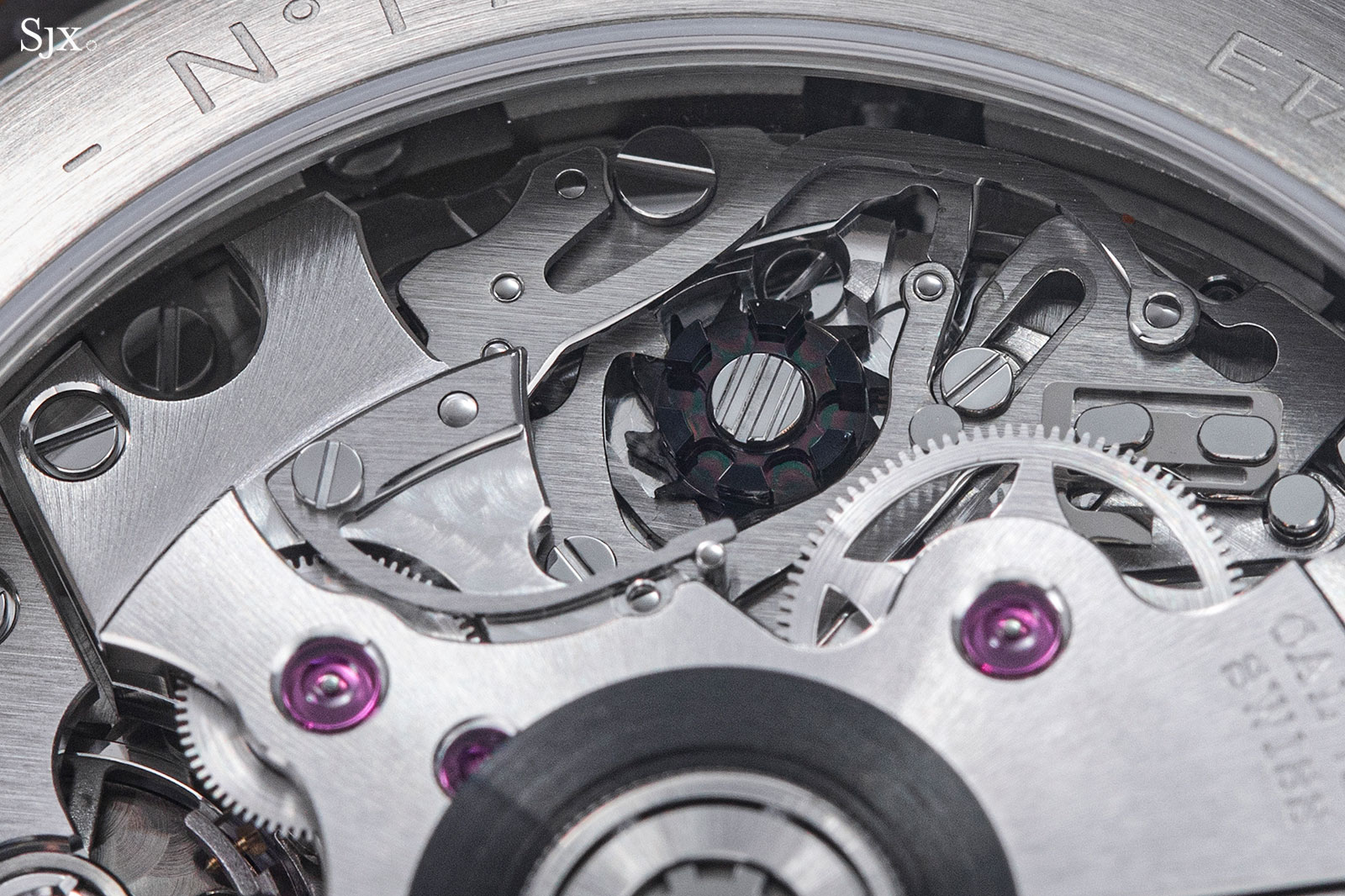
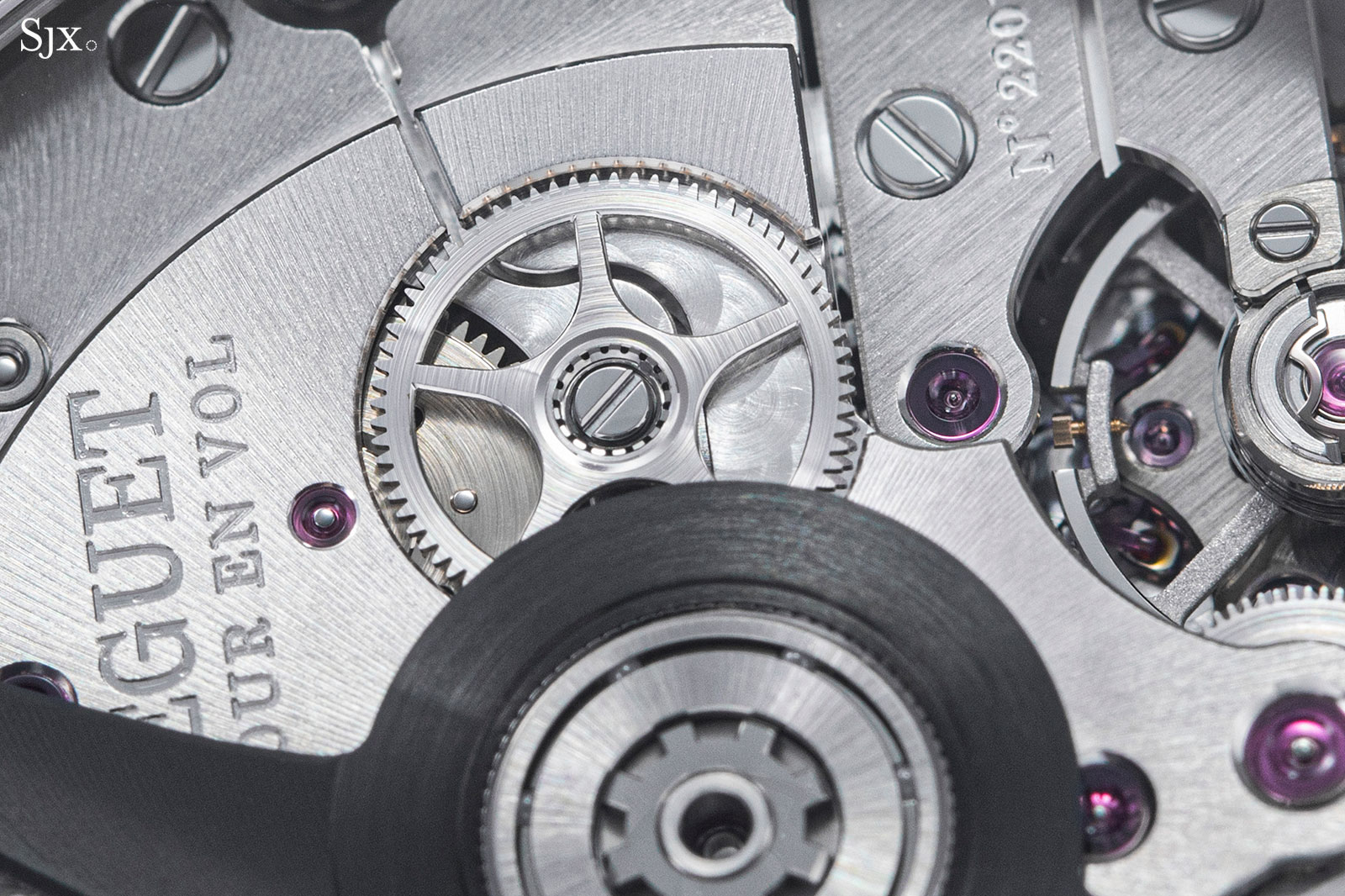
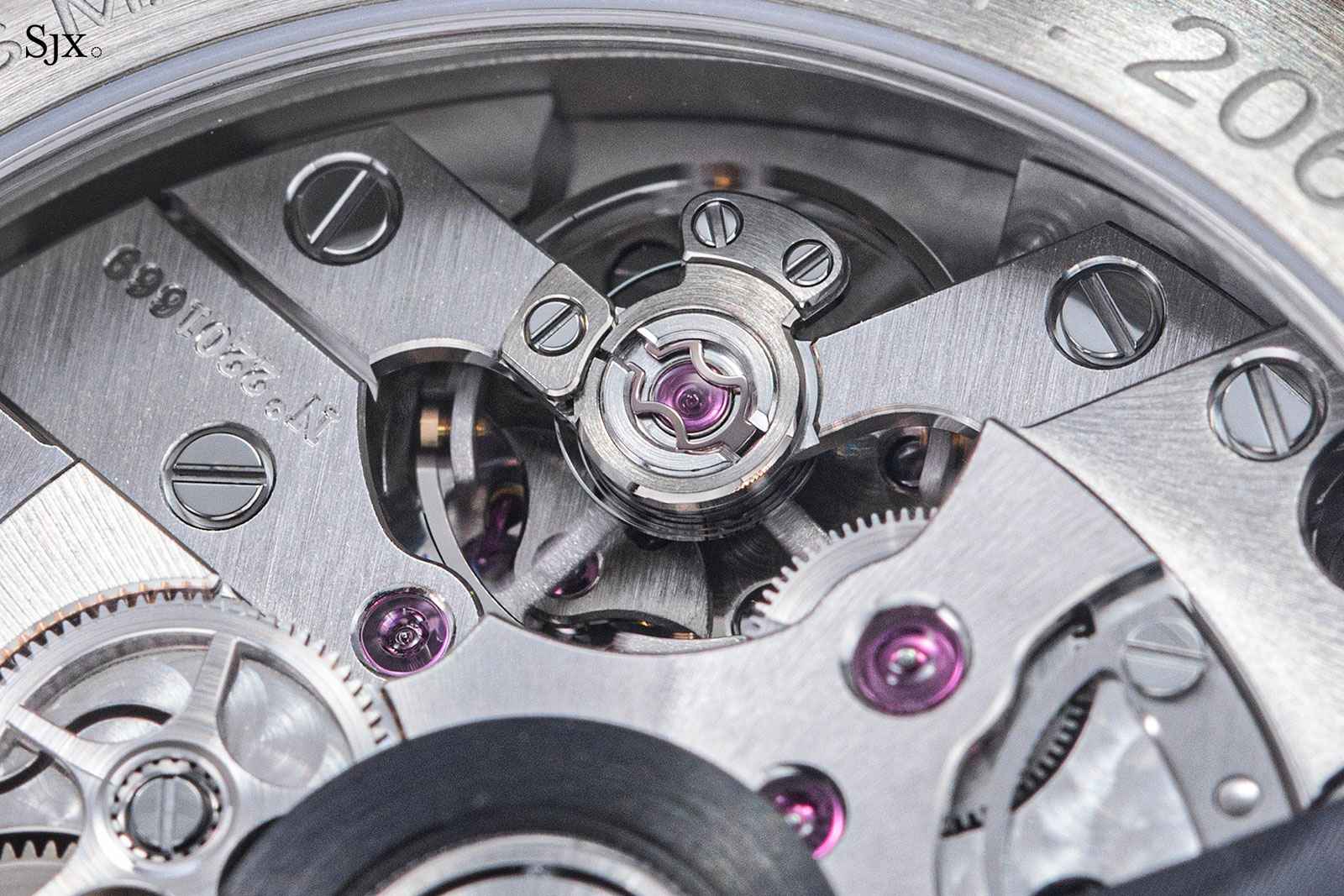
The final element of the watch worth mentioning is the box, which is actually a wing-shaped travel case in wood and leather.
Probably too large to be practical as a travel case, the box is nonetheless a smartly designed element that harks back to the ref. 3800, which was delivered in a similar-shaped box but made of plastic and aluminium.
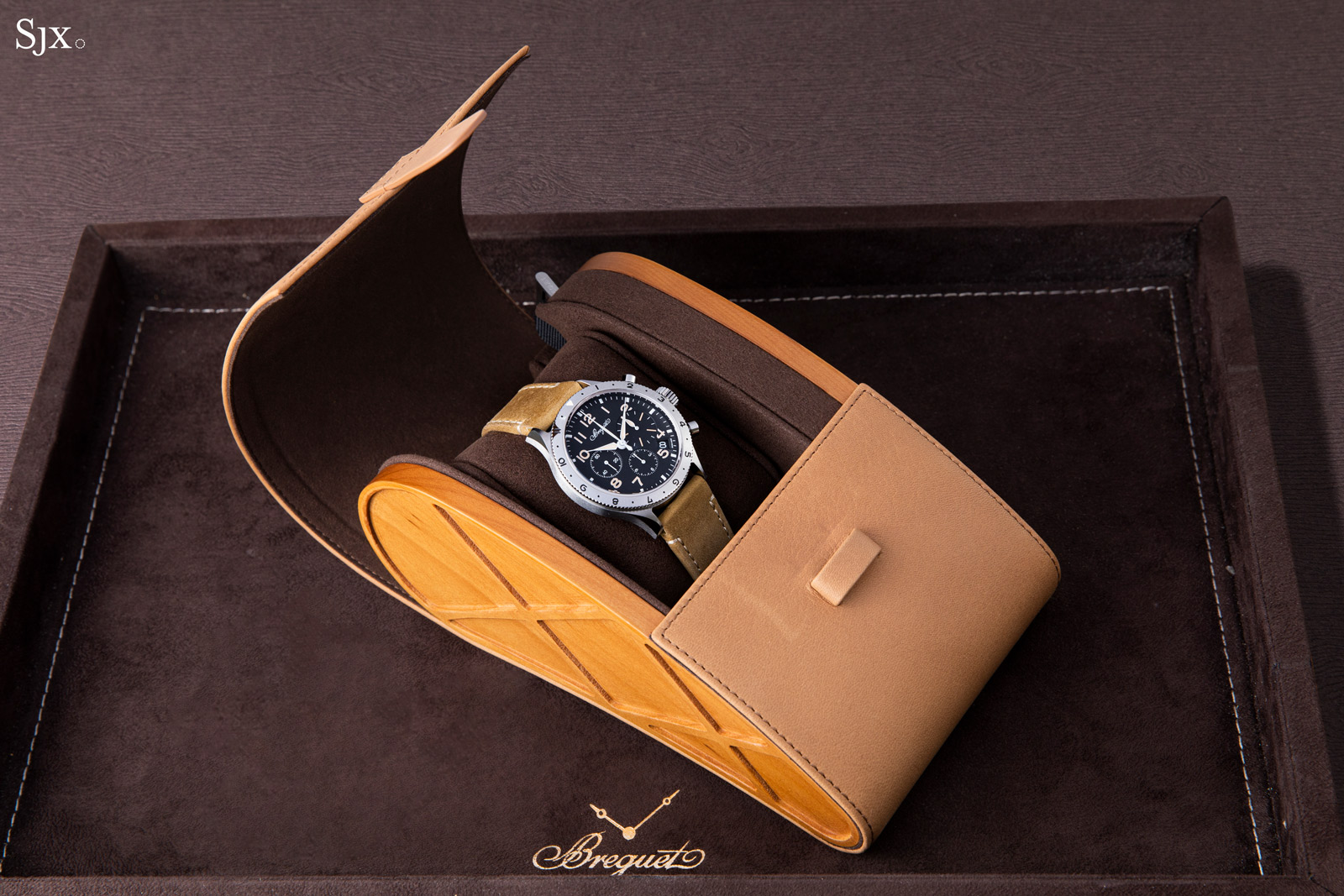
Concluding thoughts
The new Type XX is a contemporary take on Breguet’s storied aviator’s watch. Even though many of the design elements refer to the vintage originals, both models are obviously modern watches. The case quality is apparent even on the wrist, while the movement is a sophisticated construction that stands apart from the competition thanks to its high-frequency escapement.
Both versions could do with some styling tweaks to please purists, namely removing the date and dialling back on the green lume in the ref. 2057. With these being just the start of the new Type XX collection, there’s hope yet that more versions will come along in the future.
But importantly, the Type XX gets the basics right, namely the quality inside and out is excellent. With that in mind, the price tag is also reasonable as such things go since most chronographs of similar quality cost more.
Key facts and price
Breguet Type 20 Chronographe 2057
Ref. 2057ST923WU
Diameter: 42 mm
Height: 14.1 mm
Material: Steel
Crystal: Sapphire
Water-resistance: 100 m
Movement: Cal. 7281
Functions: Hours, minutes, seconds, and flyback chronograph
Winding: Self-winding
Frequency: 36,000 beats per hour (5 Hz)
Power reserve: 60 hours
Strap: Calfskin strap with pin buckle, additional NATO strap
Limited edition: No
Availability: At Breguet boutiques and retailers
Price: US$18,000, or 26,000 Singapore dollars
Breguet Type XX Chronographe 2067
Ref. 2067ST923WU
Diameter: 42 mm
Height: 14.1 mm
Material: Steel
Crystal: Sapphire
Water-resistance: 100 m
Movement: Cal. 728
Functions: Hours, minutes, seconds, and flyback chronograph
Winding: Self-winding
Frequency: 36,000 beats per hour (5 Hz)
Power reserve: 60 hours
Strap: Calfskin strap with pin buckle, additional NATO strap
Limited edition: No
Availability: At Breguet boutiques and retailers
Price: US$18,000, or 26,000 Singapore dollars
For more, visit Breguet.com.
Back to top.


